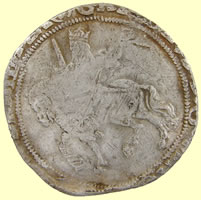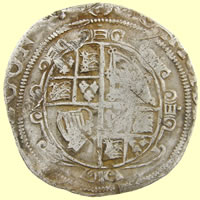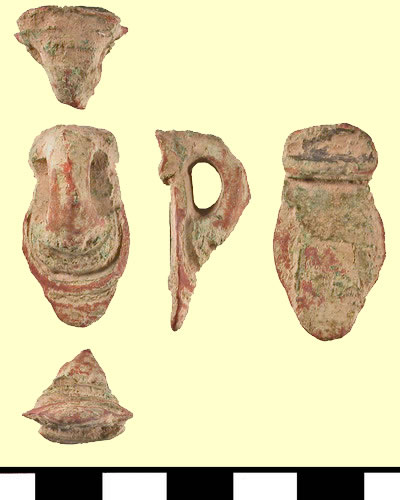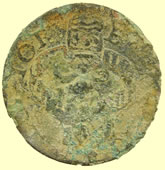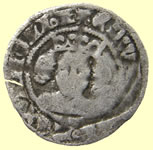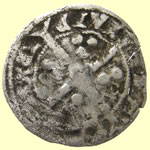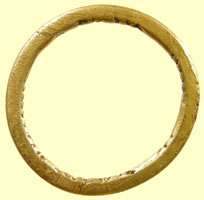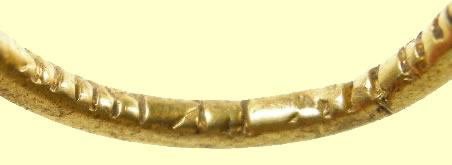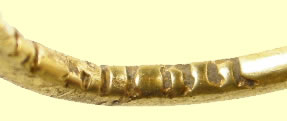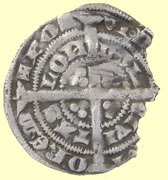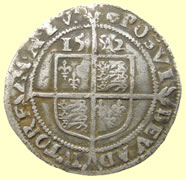

Metal detecting holidays in England with the World's most successful metal detecting club.
Twinned with Midwest Historical Research Society USA
2009 March to April Archieved news page |
6th July 2009 More database entries and ID's - Tom & Gene back from Ganes Two of our most successful Senior club members, Washington Tom and Idaho Gene have just come back form their great trip to Alaska gold hunting. Tom posted his story on the forum and is offering up a great prize in a free competition. Log onto the members forum and have your guess. More of our items recorded by the museum on the National Finds.org database ARE posted below. If you make any interesting metal detecting finds then report them to your local Finds Liaison Officer who will also ID and log them onto the database. I have another series of finds currently recorded on the database but are not released for public viewing yet as the write up on them is not yet complete. One of our finds I was really hoping to read the report on is the simply stunning medieval vessica seal matrix below which is currently with the BM's seal expert. It has been assigned an ESS number 0F1F33 but if you try and display the item is says not found. The FLO will let me know when this and the other finds undergoing research are released for public viewing.
Circa 13th C bronze Vessica seal matrix - 31.48mm H x 18.48mm wide - 8.45g Script - NOLONIM ESDARI : U
Gene, Buzz and I had a great trip up to Ganes Creek, Alaska. Gene and Buzz arrived a week before I did, which turned out to be an awesome week for all that were there. Over 22 ounces of gold was recovered by that group, Gene and Buzz coming away with over eleven ounces of it. Most of this came from one small area.
ESSEX, England: ESS-117FF5 Roman buckle
ESS-0F4281 Medieval weight
ESSEX, England: ESS-E724C7 Medieval strap fitting
EARLY MEDIEVAL to POST MEDIEVAL, Circa 1230 AD - Circa 1700 AD
|
||||||||||||||||||||||||||||
4th July 2009 More database entries - Free forum comp entries Check your entry for this years forum competition has been added to the master list, closing date has been changed to the 23rd Aug as we have a special early 'weed wacking' hunt this season. http://colchestertreasurehunting.co.uk/F/forumcompetition.htm I spoke to one of our new landowners and he is cropping early this season in late July so his 10 fields are well worth a hit during this period. More museum recorded and ID'd items below including a really nice Roman military buckle that I could not find in my books. All Roman coin finds are also recorded on the PAS database. http://www.findsdatabase.org.uk/
ESSEX, England: ESS- D33B53 Roman coin; denarius of Faustina II
ESS-E2AD42 Medieval figurine
ESS-F7E490 Roman military buckle
|
||||||||||||||||||||||||||||
2nd July 2009 Database entries and more exports Just finishing the last of the exports which means Atlanta Mike wins the 'coin hunter' of the year award. He got 96 coins in the first week of a 2 week hunt and overall
Mike is far right of the team
I have posted a large list of approved export application names to the members forum. I will be posting out finds back to guys next week. I had a meeting with the museum this morning to drop off the final batch of finds for recording and picked up the previous batch that have been completed around 80%. I will be posting all the database entries and ID's but currently the finds.org database is running painfully slow for me to get up the details. I have posted 3 below.
I have the last of the coins for repairing ready to be taken to the goldsmiths next week including a really nice Saxon Coenwulf silver penny sent to me by John Cross. I will be sending it off to the Fitzwilliam museum for inclusion into the early medieval corpus national database.
ESS-FA8D68
ESSEX, England: ESS-11BF24 Roman headstud brooch
|
||||||||||||||||||||||||||||
25th June 2009 Foundintheground - ID requests - Great stories More export pictures and find lists posted to members forum. I got an e-mail from export duty yesterday and and the first batch of export applications have been approved, more details on members forum.
Two amazing stories posted by members on the club forum as we excitedly wait for Tenn Brad's gold statue find from last season to go for inquest shortly.
At 2.8cm by 2.3cm, the treasure is barely larger than a postage stamp, but its importance is exciting experts Jewel consists of engraved gold with cabochon sapphire - click picture to enlarge In 1985, Ted Seaton had been metal detecting near Middleham Castle, as he was about to pack up and go home he detected a faint signal and from about 15" down he unearthed what appeared to be an old compact. It was only when he got home that he realised what he had found. After cleaning it turned out to be a gold pendant weighing 68 gm together with a 10 ct blue sapphire stone. A scene of the Trinity is engraved on one side of the diamond-shaped pendant and has a border of burnished gold surrounding a raised panel which gives a cameo effect and highlights the engraving. The border carries a Latin inscription showing the pendant to be a charm against `falling sickness` (epilepsy). The discovery was adjudged not to be Treasure Trove. This wonderful find was sold at auction where it realised the incredible sum of £1.3 million. The Yorkshire Museum, in York, has since raised £2.5 million to acquire the now world-famous Jewel and keep it in this country – it is one of the most exquisite pieces of English Gothic jewellery found this century. I received 3 treasure receipts form the Treasure registrar at the British museum yesterday, list posted on the members forum. Chicago Ron's gold ring find was looked at by a Continental ring expert and is not dated pre 1709 so it will be returned to him.
I am still getting dozens of requests for ID help via e-mail with large attachments and I cannot answer them by this method as I cannot risk viral attacks by opening them from unknown e-mail addresses. If you want ID help then post them on our forums on our foundintheground database. All our unknown buttons, artefacts etc are posted there as a log and if you post them there also with pictures I will help ID your finds. You can also take them to your local Finds liaison officer in you county for recording and ID. The link below takes you to their locations. |
||||||||||||||||||||||||||||
23rd June 2009 Great videos and more exports
Roman or Saxon solid gold hanging pendant ? - 2.65g, 11.95mm H x 10.68mm dia x 11.68mm W - still awaiting curators report
I am still busy preparing export licenses with more pictures and finds lists being posted to the members forum. I spoke to the Treasure Registrar at the British museum on Friday to get an update on outstanding treasures. Those that have not got an inquest date yet are still with the experts being evaluated so curators reports have not been produced yet. We are anxious to get the report dating the solid gold 'bell shaped' object found on new land last season on a potentially exciting Roman/Saxon settlement area the guys discovered.
Chicago Ron has just posted a new compellation video of his teams best finds on the forum, click this link to watch as it is a fun video. Ron has his own web site under construction ChicagoRon.com and has posted a load more of his teams video's on a single page. I have uploaded some of his videos to our members video page. Video Page link
http://www.chicagoron.com/englandvideopage.html One video I found very interesting is Ron going through his pouch at the end of a mornings hunt and showing all the coppers, lead and do dads. Ron is running two weeks at the Barn House in Oct if you want to join his very successful team. He has a page on his site where he discusses the trip .http://www.chicagoron.com/englandtours.htm
|
||||||||||||||||||||||||||||
18th June 2009 More exports posted - Out and about - Free slots I have been out seeing the landowners and getting cropping schedules for the coming season. A new farmer intends to crop in July so there will be harvested land ready for the early 'weed wackers' August hunt. There is one free slot on the 23rd August if anyone fancies an the warm weather. Chicago Ron also has a free slot on his Oct 'Barn hunt' as a guy has had to drop out due to illness. You can either do a one week or two week hunt, dates are on the Barn page. More export pictures and finds lists posted to the members forum including ILL Mark's monster pouch where he found 29 pieces of silver and his first ever Celtic gold, he was seriously on his game this last hunt. I managed to find his Celtic wode grinder pestle in a reference book, great find Boston Beau had an interesting military button in his pouch which is not in my reference books and appears to be a 12th Regiment of foot one piece with the word 'Reserve' under the regiment number.
12th regiment of foot ?
Celtic wode grinder pestle I have a meeting with the museum shortly to take in more finds for recording and to pick up the last batch I left with them. I have added the two very interesting double stuck early milled silver coin finds out of the export pouches to see what their experts make of them. I am not certain how rare these double strikes are for that period of minting.
Double struck 1690's William III milled silver sixpence - early harp large crown, first bust
This coin has me totally stumped !! First 1645 Charles 1st hammered silver three pence we have found - double struck coin which has obscured the mint mark. The coin has been rotated and double stuck and the combination of oval shield with this legend does not match. It is possible that it is a half groat and that the III behind bust is II. It could be a Tower half groat Group D, North 2254 but the crown is not that of a bust 4. I suspect this is a very rare coin as I cannot match it in JJ North's ref book. The normal Tower legend is IUS THRONUM FIRMAT and most have the CHRISTO legend. Some coins had the IUSTITA written in full. Is this an overstrike of a Ashby de la Zouche mint trying to cover the declaration coins in 1645/6 ? Rev IUSTITA THORNUM FIRMAT
|
||||||||||||||||||||||||||||
14th June 2009 More export and ID's - interesting stories Min Mindy posted a great link to the Museum of Wales shop where they are selling some really finds. 'Here's an ebay store that has lots of interesting surplus coins, artifacts, fossils, etc. they're selling off to fund some other projects'. http://stores.shop.ebay.com/museumofwalesantiquities__W0QQ_armrsZ1 'Dismembered skeletons discovered' http://news.bbc.co.uk/1/hi/england/dorset/8094935.stm Still busy preparing the export paperwork and have just uploaded more find lists and pictures to the members forum, check them out including Boston Beau's monster sized pouch. How anyone can dig that many keepers in a week amazes me. Boston Beau also had a great bonus find in his export pouch I missed photographing on his last day of his hunt. It is the first ever Henry VIII hammered silver half penny found here and it is tiny at only 11mm in dia, great find.
Tiny 1547 -51 Henry VIII Posthumous coinage - hammered silver half penny - Canterbury mint 0.33g, 11.81mm
Some real nice buttons and do dads I just cleaned up out of the export pouches. The 38th Regiment button in not in the reference so I have sent pictures off to our button expert for his views.
Romano/British twisted wire fastener
I have updated the British Numbered regiment button page
|
||||||||||||||||||||||||||||
9th June 2009 More ID's and exports - Treasure inquests I spoke to the Coroners office this morning to check on the process of our treasure finds currently in the system. The following finds and paperwork are now ready for the next inquests to be held at Chelmsford Coroner's court shortly. While we went through the paperwork there is more information on Ill Joe's 12thC sapphire gold finger ring which I have just been sent a copy of by the FLO at Colchester museum, very interesting how they determined it was a sapphire and the gold content of the ring. REPORT FOR THE CORONER ON THE ANALYSIS OF (submitted via The Department of Prehistory and Europe) Non-destructive X-ray fluorescence analysis of the surface of a finger ring from Tendring, Essex, indicated a gold content of approximately 60%, a silver content of approximately 20%, and a copper content of at least 19%. The dark blue stone was identified by Raman spectroscopy as corundum, which for this colour is known as sapphire. The ring weighs 2.48 grams. Department of Conservation and Scientific Research
I have updated the treasure and hoard page with latest info
It took me two years to finally get an ID this copper coin find of Mass Bruce's thanks to the guys on the French lefouilleur.com forum. Even with the ID I still can't find it's entry in the World Coin books of that period. I have uploaded more export find lists and pictures to the members forum.
I found a modern version of the calendar pencil for sale on the web similar to the one I posted on the 6th
|
||||||||||||||||||||||||||||
6th June 2009 Saxon exhibition - Saxon donation and more ID's
The 2,000-year-old gladiator's helmet discovered in Pompeii's ruins
I dropped off and picked up more of our finds from Colchester museum yesterday. While I was waiting for the meeting I was pleased to see one of our previous finds featuring on a brochure for the Saxon exhibition currently on at Ipswich . The gold Saxon dagger pommel is normally on permanent display in Colchester but has been lent to Ipswich museum for a brilliant free Saxon exhibition on there from 6thMarch to 5th Sept, get along for a visit if you can.
Saxon (c.550-650AD) dagger pommel found by Ohio Bud
A couple of years ago Cal Shawn found this stunning Anglo Saxon/Viking silver decorated strap end. It was reported as treasure but eventually disclaimed by the British Museum as being under 10% silver by weight , a treasure item has to be over 10% by weight under the terms of the Treasure Act. The British museum wished to acquire it for their collection but where not offering him a sufficient reward. I therefore bought it so that members could get to see during their trip but now it is time it should be in the local museum in their Saxon collection. Saxon finds are the rarest category so I have now donated it to Colchester museum for all to enjoy
9thC Viking engraved silver strap end 5.82g, 44.44mm L x 11.91mm W. More of our finds recorded on the PAS Finds.org National database
ESSEX, England: ESS-6BE383 Roman vessel: patera handle 2nd C Roman cast copper alloy patera handle. The handle is sub-rectangular in plan, with concave edges which expand out towards a sub-oval terminal and a 'tanged' end. The tang is located towards the end which would have been attached to the body of the vessel. There is a worn break across this end. The handle is 144.54mm long, 53.09mm wide across the terminal, 25.75mm wide across the main section, 55.76mm wide across the tang and it is 3.22mm thick along its whole length. The handle weighs 102.36 grams. It has a mid-green patina. The surface is pitted due to corrosion
Silver find returned ID'd from the museum yesterday. Pencil calendar 'It would have had a hollow shaft where a pencil sat and the top had a rotating arrow to indicate date, Georgian period. What a neat find'
While processing the export pouches I noticed a very similar lead mount to one that Min Mindy found in Feb, looks like they are from the same casting. Updated the following individual pages below with the latest finds
|
||||||||||||||||||||||||||||
3rd June 2009 More exports and ID's - coin straighteners
I have just posted more guys find pouches to the members forum. Idaho Travis had some real nice bonus unrecorded buttons (posted below) and do dads in his pouch including another really nice 4th C Roman bronze I sent to Mark Lehman for ID. He has just send back it's ID and the other 2 Roman coins I sent him on Friday. I have sent the unrecorded buttons off to Tim to see if he can shed any light on their ID's and dates. The unknown 'Hon. Artillery Com.' is an amazing button. I have a large batch of bent hammered silver coin finds and Idaho Jerry's 18thC mourning ring to take to the coin straighteners this week. It will be first time we have asked the goldsmith to try and fix a gold ring so it will be interesting to see what kind of repair he can do on it.
Gold mourning ring of Richard Wall aged 80 died in 1797 - some black enameling remaining Legend reads - OB 21st OCT 1797 // E 80 RICHD WALL
4th C Roman bronze sent for ID 4.30g, 24.65
I'm afraid I can't be very sure about what this one is. The "reverse" (I guess it's the reverse) resembles (but not at all closely) 2 different very common types, (and a highly unlikely 3rd) - 1 of which is common for British lots and the 2nd of which is not. It really doesn't look much like either one, however. I suppose it could be a "GLORIA EXERCITVS" 2 soldiers flanking 1 standard type - in that case, the lettering in the exergue would be the mint mark - for Sirmium (?) maybe? "SIRM". If this is what it is (and I have serious doubts) the 1-standard GLORIA EX's date to 335-337 AD, mostly and were struck for all the living male members of the family of Constantine.
|
||||||||||||||||||||||||||||
29th May 2009 More exports and updates Hidden treasure trove of gold to be auctioned - Great story link 'The hidden jar contained 42 gold coins'
More export pics and lists just posted to the members forum. The latest free forum competition entries received have been posted to the Forum Competition page, amazing range of numbers from 500 to 5000 already !! Make sure you get you entry in for a chance to win a free trip next season. I have updated the following individual pages with the latest finds.
|
||||||||||||||||||||||||||||
26th May 2009 Lots of paperwork and ID's - Early hunt request 23rd Aug Meteorite hunting - Interesting article posted by Can Ed of the forum 'Here is a link concerning a meteor shower that hit Saskatchewan last winter. The main impact was about 90 miles west of me. All on private land and has been overrun with primarily university people looking for pieces. Could not find the article in the Saskatoon paper, but a 13 kg piece (30 lbs) was found by the owner of the land. Valued at $250,000. He donated it to the University of Calgary. More than likely he had more smaller pieces. Some of the guys have requested a special early hunt 23rd August to 5th Sept as it fits in to school holidays. Normally the season starts on the 5th Sept but I have opened up slots on those dates if anyone else wants to join. Drop me a mail if you are interested. Still banging on with preparation of the export paperwork and have had a marathon session filling out all the application forms. The latest batch posted to the members forum have now been submitted to export duty. I got an e-mail in from the museum and Ron's suspected sword handle find from march has between ID'd as a 3rd to 4th Century AD military pan handle, what a neat find. 'This piece is from a large bronze military pan or Patera (as it is commonly referred to) ' Interesting that it was near where one of Ron's team, Chicago Reid, found that really crispy silver Roman coin I cooked up. This is from a new site so it worth another look this coming season after a fresh plough.
Roman silver as dug and 'cooked' to reveal the detail Yes, of course this is Faustina - that's pretty obvious. However there were 2 Faustinae, the wives of Antoninus Pius and Marcus Aurelius respectively. This is the 2nd, also known as "Faustina Junior". She and Marcus Aurelius were married in 145 AD. while he was still Caesar under Antoninus Pius and raised to the rank of Augusta in 147. So her coinage exists in several phases: those struck by Antoninus Pius before, then after becoming Augusta, those struck by Marcus Aurelius during her life, and those struck in her honor posthumously. she and Marcus evidently had a closer relationship than that enjoyed by most Imperial couples - Faustina accompanied or visited him throughout his military career in far-flung outposts while fighting the Germans. For this, she became known as "Matri Castrorum" - "Mother of the Camps". This piece was struck by Marcus Aurelius while she was still living, sometime between his elevation to Augustus in 161 and her death in 175. The reverse type, which is a bit hard to read in its present condition is "SALVS" - the allegorical personification of Salus ("health", but as in "the Health of the Empire" or "of the body-public", etc.) seated left feeding a serpent arising from a low altar at her feet. This is a pretty obscure reference for us at this remove in time, but it was full of important symbolism for the Romans. Whether at that point in time it was still occurring that the Vestals and/or other faithful Roman women fed actual serpents in ceremonies from which all men were banned, I don't know. Ceremonies of this type were important well into the Imperatorial era. However, the image of this ceremony remained a part of the Roman psyche and symbolized the "Purity" or "Virtue" of the Empire to the extent that it could interact with serpents and not be harmed.
146mm L x 59.96 mm W x 3.51mm T
Roman military cooking pan - More pics and write up at the link below A couple of Romans out of Chicago Reid's export pouch had some detail showing so I have posted them to Mark Lehman for his views
Roman bronze sent for ID - 3.35g , 16.71mm
Roman bronze sent for ID - 0.71g, 10.96mm
|
||||||||||||||||||||||||||||
22nd May 2009 More iD's and exports - Forum competition launched - Hard core slots More export find lists and photo's posted to the members forum We try and run these tours to suit the different requirements of the guys coming here. Normal detecting hours are 8am to when the guys decide to finish normally 6 or 7pm. There are however serious hard core guys that hunt until 10pm with nightlight's and we have a Barn house week running with Louisiana Sal that will be 7am to 10 pm, giving the guys 14 hours searching per day. Sal's hunt filled up instantly and we opened up another hard core slot hunt in Oct designated 'hard core' and that also is now full. Idaho Orv is going to put forward a date in Spring 2010 that we will again designate 'hard core'. Keep an eye on the availability page if you think you are 'hard enough' to join.
The prize this year is another biggy - free week, full board holiday, totally inclusive, you just have to get here ! This years free forum competition is to guess the number of milled copper coins, both English and Foreign found here from Sept 2009 to April 2010. More details on the Forum Comp page
Thanks to the guys at the French and Italian forums for ID'ing two of our outstanding continental silver finds from March. The hammered coin is an early 1500's Portuguese 20 Reais, my earliest World coin book starts at 1600 which is why I could not find it, nice find.
Sebastian I., 1557-1578. Vintém (20 Reais) o. J., Lissabon. Gekrönte Initiale / Gekröntes Wappen. Gomes 12. 02. Sehr schön
1786 French 1/10eme d'ecu dit aux branches d'oliviers" for Louis XVI
|
||||||||||||||||||||||||||||
20th May 2009 More updates, ID's and exports I have updated the individual pages below with the latest finds. I have posted more export find sheets onto the members forum. The next meeting with the museum to pick up outstanding disclaimed treasures and drop off more finds for recording is early June.
I have just got some more ID's on our outstanding button finds below. I still have a bunch of unknowns I have sent off to Tim for his views.
|
||||||||||||||||||||||||||||
16th May 2009 More updates and exports Updated all the button pages below with our latest finds. I have a whole bunch of our military and navy button finds I can't see in the reference books so I have sent off to Tim our button expert for his views.
Unrecorded buttons sent off for ID
|
||||||||||||||||||||||||||||
15th May 2009 More ID's and exports
Still busy working through the export applications, more find sheets and photo's posted to the members forum. I just cleaned up some neat buttons out of Ohio Steve's bag including a really nice 70th Regiment of foot button.
I got a great e-mail in from a badge collector Stuart who has sent us ID's on badges we have found. Some appear to be rare finds.
161 Athletes Volunteer force badge September 20, 1914, Sunday LONDON, Sept 19. -- The English soccer players have got together and formed an organization called "The Athletes' Volunteer Force" for home service, which enables them to keep their engagements with their various clubs during the football season. Many well-known players are already at the front, and they have been followed this week by Lintott of Leeds City, Crab-tree of the Blackburn Rovers, Evans of Aston Villa, and Kelsall of Sunderland
Hi. Thank you for your fascinating website, it never ceases to amaze me the range of items found. The Athletes Volunteer Force badge is a super rare find and in good condition this would be a very valuable badge. May I please suggest a couple of identifications for some of your badges?
Teddy Tail League badge is probably 1930s, the two main makers of these badges were J R Gaunt of London and Roden of London. (I have a write up on my Flickr account if you are interested – account name is ‘retro stu’).
'Teddy Tail the cartoon mouse and main character of the Teddy Tail League delighted children with his stories for 40 years. He is distinguished by the suit he wears and always shown with a knot in his tail. A somewhat mischievous guy he loved the occasional prank, parties and getting into all sorts of adventures with his friends. Teddy Tail lived in the little village of Whiskertown whose friend included Dr. Beetle, Piggy, Kitty Puss the cat and Dougie the duckling amongst others.
Stormy Weather was a promotional badge for the song made famous by Lena Horne in 1943. This is quite a rare badge and in good condition can sell for about £10. Another super find!
For Empire – showing the Union Jack and St. George Cross – a ‘Junior & Imperial Conservative League’ political badge. This one likely 1920s or 1930s.
League of Youth – a 1930s children’s club badge issued by the Daily Sketch newspaper.
WW1 Flying badge – The Biggles Club, probably 1920s or 1930s. Quite scarce.
Regards. Stuart.
|
||||||||||||||||||||||||||||
11th May 2009 Roman bronze coins - Record book - more updates Archived half of this page to speed up load times Article of UK detecting in Washington post 8,000 year-old axe head discovered on Inch Island I have updated the Elizabeth 1st coin page with the latest finds and split the page in 2 as it is far too big. The coins are split in to small and large denominations now to speed load times.
I have updated the club record book with Rod's new entry, the 136 BC Roman find - Record book link Cal Jim just sent me a picture of a grotty Roman coin find he cleaned up from his last hunt, I just got back Mark's views. There is a great 4 Meg colour free download Roman cleaning book available on our finds database - click here
2nd C Roman copper coin sent off for ID - 7g, 26mm I can't guarantee it's a galley reverse, but I can't rule a galley out either. What it is, definitely, is an As of Hadrian - and it might be the galley type. It might also be a standing figure of some sort viewed 90º out of orientation. There were quite a few varieties of galley reverse for Hadrian, too, which is another factor to be taken into account.
Sorry I can't be any more positive about specifics, but I don't put the features on the coins, I just try to read them.
Mark
Unrecorded one piece military button - sent off to Tim for his views '1st L Essex'
I am still waiting for feedback from the manager at the local hotel on a better discount members price for a weeks B&B and evening meal deal. The hotel option is new for this season if guys want to hunt when the other accommodations are full. It includes all the available 250 fields, ID, recording and exporting of finds as normal. It would also suit members that want to bring a non detecting spouse or want a 'softer' detecting option by hiring a car and coming and going as many hours as they please. More details posted on members forum or check out hotel link.
|
||||||||||||||||||||||||||||
9th May 2009 Oldest coin ever found here 136 BC - Another 'cooked' Roman More completed export find sheets and pictures posted to members forum, Washington Tom is a silver magnet and found our first ever Charles 1st milled silver halfcown find, more of his sheets posted to the forum.
1. 18thC decorated silver clog fastener
Ohio Jerry found the top chunk off a Roman silver coin and amazingly found another chunk off it that was lurking in his finds pouch. It was thick with 'horn' crust so I 'cooked' it up and it is the bottom half of the same coin, great find. This is why we are very strict here with not 'chucking' any tiny relic found during the hunts until it has been looked at closely during the export process later on. I have sent the coin off to Mark to see if this changes his initial ID on the coin now he has another segment. This find is very interesting as I have discussed with Mark before what appears to be cut halves of Roman silver coins we have found in the past. We assumed they had been cut for small change which was prevalent in the medieval times with hammered silver. However as you can see below with Rod's coin it has a huge stress crack running down the obverse. This broken Roman of Jerry's is clearly not broken by the plough as it has no impact mark. I think that the freezing and heating of this coin in the ground over 2000 years has opened up any flaws that were produced during the hammering process.
Could be Annia Galeria Faustina, more familiarly referred to as Faustina the Elder (Latin: Faustina Major; born September 21 about 100, died 141), was a Roman Empress and wife of Roman Emperor Antoninus Pius. - I have stopped cleaning Rod's silver Roman coin as there is a huge stress crack on the reverse after the crud was removed. It did however reveal the outline of horses similar to Can Bill's 132 BC find from last season. I sent it off to Mark Lehman thinking it was match to Bill's but his reply amazed me as it is now officially the oldest coin we have ever found here at 136 BC. Unfortunately Rod has no idea on which of our 250 fields he found it as he just thought it was a thick copper at the time. He think's it could have been from the East side of our Bronze age village site whereas Bill's came from the NW side of the village and he never searched those fields during his tour.
Bill's silver Roman It's clear enough now for a positive ID - it is definitely a Roman Republican Denarius - moneyer: M Aburius M.f. Geminus, 132 B.C.
RSC-Bab Aburia 6, SR 127, Syd-CRR 487.
You should, eventually, find the letters: "GEM", behind Roma's helmeted head on the obverse, and there should be an asterisk-looking mark under her chin which is actually a monogram of XVI - ie: 16 Asses to the denarius. On the reverse, you have radiate Sol driving a fast quadriga right and brandishing a whip, below the horses, you have M ABVRI with the AB and VR in ligate form, ROMA in the exergue.
Very interesting, as this piece dates to a century and three-quarters before Claudius' conquest of Britian. I'm going to guess that it originally came to the island in trade for tin, or was carried as a good-luck piece by a superstitious soldier all those years later. These certainly weren't normal, circulating pieces anywhere else in the Empire in the late 1st through early 3nd century era we associate with a significant Roman presence in Britain and circulating silver. These were "overweight" by the standards of the denarii at that time and after Nero's debasement, the silver was too pure also - these would have been pulled out of circulation wherever anyone knew that their silver value was well above their nominal denomination - the sort of information that any savvy merchant would have been aware of.
Mark
Rod's silver Roman - note the huge stress crack on Reverse I'm reasonably certain this is RSC/Babelon "Lucretia 1" - Cn(aeus) Lucretius Trio, 136 BC. Everything visible on your coin fits with the descriptions, line-drawings and photos I have available. There are a couple other possibilities - not quite such complete matches, but possible - from approximately the same time-frame. Unfortunately, the remaining "scales" on this coin cover the two areas I'd need to see to be 100% certain and rule out the possibles. There should be, in addition to the visible "X" below the chin: "TRIO", vertically & downward, behind Roma's helmet on the obverse. On the reverse, the whole abbreviation beneath the horses of the Dioscuri should be: "CN LVCR". This type is also # 114 in vol I of the recent edition of Sear, Syd/CRR 450, and RRC 237/1a. It's interesting that this piece is, relatively speaking, so closely contemporaneous with the Republican denarius found last year - was this one found nearby? I replied to Mark that it was found on the other side of our Bronze age village site and here was his reply I also wonder how commonly 2nd century BC denarii are found in Britain in general. I outlined why this seems a bit anomalous when I ID'ed the last one. You could be establishing some evidence of significant trading between Rome and the Islands (probably through middleman-merchants) a good bit earlier than the era in which Britain became of adequate interest to Rome that it became an invasion target. Either that, or we're seeing that denarii remained in merchant hoards (rather than in circulation, since a century-plus of circulation should have left them significantly more worn) among those who traded with Britain until well after their relative era of circulation in Rome - possibly due to their greater content of purer silver than in later denarii - although at 2.64gm, this specimen is significantly underweight.
Mark Some items like the Marc Antony legionary denarii continue to be found in some quantity in Northern European and British hoards deposited up to 300 years after their massive issue to Antony's troops in 32 or so BC. They are often discovered in a severely worn condition meaning that they had circulated freely for a significant part of their existance. (here's a sample of some which have passed through my hands in recent years, both highly worn and in better condition http://www.stoa.org/gallery/album357 ) These pieces were not as pure as the "homeland" denarii and so were excluded from early recoining recalls as not having adequate bullion value and were (evidently) traded to the North in some quantity where the residents, accustomed to potin and other debased coins, accepted them freely. Soon, the Roman denarii had been debased to a point where they had a lower silver content than the legionary denarii, and so they were then saved from recall by virtue of containing more silver than standard denarii - they were worth more than their "face value" - and in demand in the North due to having a higher than average bullion content, so they were kept out of the melting pot first for being too base and later for being too pure, but it is well established that the "barbarians" to the north far preferred silver to debased fiat coinage of a higher face value.
So, "Greshams Law" can play a significant part in whether or not any given coin survives, but it can affect the survival in either a positive or negative manner, depending on what else was in circulation.
Mark
|
||||||||||||||||||||||||||||
6th May 2009 Very rare button update - more ID's and exports - 100BC Roman silver Uploaded more export find lists and photo's to the members forum. I am still 'cooking' Rod's surprise Roman silver coin find. The crust on this coin is starting to soften but it is an 1/8 inch thick so it will take a lot more cooking to get the final crust off. The bust so far revealed is that of a Roman Republican silver so probably 100 BC plus, what a great bonus find in Rod's copper pouch !! You can clearly see the thickness of this crust in the latest shots I took of the coin as it cooked. Remember if you try this method to clean Roman silvers then patience is the most important aspect and the process can take up to 3 weeks. Check out the cleaning page for the 'mix' I use to 'cook' them.
Before and during 'cooking' shots of 1 2ndC Roman silver coin.
Daryl has written to me about his research in to his unique 16th Regiment button find and he going to donate it to them, very generous offer.
Hi , I have been talking with one the British Button Collecting Society military button experts about the button.
He says:
Hi Daryl,
The Museum of the Royal Warwickshire Regiment, St. John's House, Warwick UK, do not have an example button for this period. They do have an officer's shoulder belt plate, and I am certain would love to have a button. I did a short article on this very button and the shoulder belt plate. The mystery is this, during the American War of Independence 1776-1783, our Militia Regiments were 'embodied', mainly for guarding prisoners, coastal patrols etc. The Precedence (Seniority) of the Militias at this time was decided by an Annual Ballot, held from 1777 onward on 1st May each year. These numbers were printed in the London Gazette and in the War Office Annual List. By the Spring of 1783 most of the need for embodied militias was at an end, however, some regiments were retained but which ones other than Warwickshire is unknown. Though no 'official' ballot was held in 1783, those corps that remained 'embodied' did hold one and Warwickshire drew 16th place. For some reason they were very proud of it, and despite re-embodiment in 1794 (French Revolutionary Wars) and the drawing of a fresh number, 31st (now to be held for the duration of the conflict, i.e. up to 1801) they held on to it. Upon the renewal of the War in 1803 the number was still in evidence. In 1804 a fresh Ballot took place and they drew 40th place and although this was not used, the design of the button was changed, a large central Roman 'M' with 'Warwick' around the lower edge. No item has yet been traced showing an unaccounted number 1st to 15th for that mystery ballot of 1783.
All the best,
Dixon
I wrote him back and said that if they really wanted one for display, they could have mine. If they want it, Dixon will be contacting you.
Daryl
Tim has sent me ID's on two of our unknown buttons finds
Great Western Railway
Police
1835-1947
Burt - Railway Buttons of the World
Page - 24
King William IV, 1830-1837. Servants and officers of the King at Court or Palaces.
3.56g, 23.34mm. Mark Lehman has just sent this ID on Van Brent's earlier Roman coin find This piece appears to be Maximian, colleague of Diocletian, whose coins go through the same changes during Diocletian's reforms (290's AD) as do the senior emperor's. I am not completely sure, since there is so little detail visible in the image of the reverse, but this appears to be either a pre-reform antoninianus or post-reform "radiate" with one of the several "one character faces another" reverses. The most common of these is CONCORDIA MILITVM with Maximinus standing facing right receiving a figure of Victory from Jupiter, standing facing left. I would add that this is merely a guess. There are several reverse types which appear on both pre- and post-reform types which involve two characters standing facing each other and there simply is not enough detail obvious in these images to be certain which it actually is.
Mark
|
||||||||||||||||||||||||||||
3rd May 2009 More finds, exports, treasures and Roman silver The latest issue of the annual treasure report is just out and quite a few of our previous treasure finds are detailed in there. I will be posting more of our treasures over the next week or so. It can be viewed on line now at the link below, 400 pages of amazing treasures reported year ending 2006. http://www.culture.gov.uk/images/publications/TAR2005_2006pt1.pdf http://www.culture.gov.uk/images/publications/TAR2005_2006pt2.pdf
I was preparing Can Rod's export pictures and while laying out his copper coins in his pouch I instantly 'felt' this Roman silver which is completely covered with 'horn crust' I rubbed an edge to reveal a grey colour so I put it is instantly in the 'cooker' to remove the crust, hopefully there is some detail underneath to ID it. Rod also had a really nice Tudor period decorated thimble l missed while the hunts were in full swing.
I have posted more export sheets and pictures onto the members forum. Mike Lehman has just sent me back the ID of one of Rod's legible Roman coin finds.
4thC Roman bronze coin sent off for ID 17.04mm, 1.28g 'This one's easy. In 330 Constantine declared Constantinople to be his new capitol. At that time he also commissioned a pair of "city commemorative" reduced folles - one to honor Constantinople and one to honor Rome. Both have a helmeted and mantled allegorical personification of the city - ROMA & CONSTANTINOPOLIS - facing left on the obverse and both have anepigraphic (without inscription) reverses with scenes important to the mythologies of both cities. The She-wolf suckling the twins, Romulus and Remus appears on the VRBS ROMA pieces, and Victory standing left in the prow of a galley holding a scepter and leaning on a shield is on the reverse of the CONSTANTINOPOLIS pieces. By now you should realize that your is the CONSTANTINOPOLIS type. These were produced between 330 and 340 AD at all the mints. I'm a bit unsure about the mint-city for this one, perhaps you, having the coin to look at, can tell. I can see [?]CONS[-T?], [-A?] in the exergue.
If there is a letter like P, S, T or Q before CONS(T?) so the whole thing reads something like "PCONST" or"SCONST" it's from the mint at the city of Arles which had been re-named "Constantina" during the period 328-340 AD in honor of Constantine's son, Constantine II.
If there is no letter before the CONS and the letter after is an A, B, G, D, E, etc, so the whole thing reads something like "CONSA" or "CONSB", it's from the mint at Constantinople.
Mark'
2nd C Roman silver - cooking to remove crust
16th/17th C Tudor period decorated thimble
|
||||||||||||||||||||||||||||
1st May 2009 FOTY winner announced - Wayne Otto Memorial cup - more exports I have posted more export pouch find lists and pictures on the members forum. Those finds with the ** in the legend are due for museum recording on the National database. Here is a picture of the button I cleaned up out of Daryl's pouch a couple of days ago. It is an unrecorded one piece pewter 16th Regiment of foot Warwick button. I have sent it off to our button experts for his views.
Unrecorded 16th Warwick Reg button
The voting turnout by members for the 'find of the year' was almost 100% this season, thanks for all the members support. It was a landslide victory for Brad's Medieval gold statue find with 82% of the votes. Big congrats to Brad for such a stonking find and he wins the free weeks trip, the silver Urn trophy and more importantly his name on the shield of honour. Brad statue is currently going through the treasure process and is at the British museum awaiting the valuation committee stage. Below is the curators report on the find.
Treasure Report: 2008 T581 A medieval figure of John the Baptist. The saint is shown not in his usual attribute of a camel skin, but in the robes of a prophet. He gestures with his right hand to a salver, which he holds in his left. This was originally designed to carry a lamb, signifying the Lamb of God. A scroll issues from the Saint’s left hand and is inscribed with the words The figure stands on a small plinth with a finished base. It is designed to be seen in the round and on its back there is a loop for attachment to an object. It would probably have been entirely enamelled, but no traces of enamel survive on the figure. The figure is gold and dates from the late fifteenth or early sixteenth century. Dimensions: height 33 mm, width 11 mm, depth 10 mm.
Consequently, in terms of age and as the object contains a minimum of 10% precious metal it qualifies as Treasure under the stipulations of the Treasure Act 1996.
Billericay Mark (right)- Wayne Otto Memorial cup from last season There are some really great hunters that come here that were in the running for the Wayne Otto Memorial cup. This is for the club member with the best attributes and an ambassador of the hobby during the season. Mark wins the award for the 2nd year in succession as he is just an amazing guy out there, always positive rain or shine, mega helpful and the patience of a saint, he can never do enough for the guys. Everyone likes Mark as he always spares time to help guys and give solid advice.
|
||||||||||||||||||||||||||||
28th April 2009 More updates, treasures and exports I have made a start on the latest export paperwork. Every find over 50 years old must have a valid export license and they are prepared on a numbered sheet with a finds list to be supplied to export duty with the application form. All finds lists and pictures are posted on the members forum so guys can see what their fellow members are finding. The finder also gets a full set of coloured Word docs mailed to him as their application is made . It is a long process but very important as some significant finds are missed while the hunt are underway. Part of Min Daryl's pouch is posted below and he had a crusty looking pewter button I cleaned up to reveal an unrecorded Napoleonic period 16th Regiment of foot - Warwick Regiment button, I will post pics of it later. I have just received the latest 6 treasure case numbers from the British Museums treasure registrar for our most recent treasure finds, I have just posted details on the members forum. An example is below.
2009 T218 for Date of discovery: 5 April 2009 Circumstances of discovery: Whilst Searching with a metal detector Finder's or Finders' first and last name/s: Mr David Glover Parish: Wix County: Essex Grid ref: *********** TBKA (if applicable): Tendring District Coroner’s name and District: Mrs C Beasley-Murray (Essex) Object type and number: Silver figurine Other info about the object (speculative or otherwise): ?Post Medieval PAS find id: ESS-C71F62
1. 1634-5 Charles 1st hammered silver half groat - Tower mint under Charles 1st - Bell mintmark - Type 3a1, no inner circles
I have updated the following individual find pages with the latest finds
|
||||||||||||||||||||||||||||
26th April 2009 Updates to finds pages - Find of the year vote and forum comp entry Keep your votes coming in for your favourite find of the year 2008/9, closing date for voting is the 30th April. Members have decided on the forum that those who do not vote this season will not be elible for next years forum competition to win a free weeks holiday. Updated the following individual find pages with the lastest finds
|
||||||||||||||||||||||||||||
24th April 2009 Celtic gold's recorded - Finds recorded Keep your votes coming for you favourite 'find of the year' - closing date is 30th April I have been out and about showing farmers their latest treasure finds prior to them going into the museum yesterday . I also dropped off copies of the recent curators reports for those currently going through the treasure process. I picked up the latest finds now recorded on the National database by the museum but have been unable to post them here yet as the National database is being upgraded. I cannot get it to display the data when I enter in the ESS Id. http://www.findsdatabase.org.uk I finally got back the ID's and the Celtic Coin Index record numbers from our last two Celtic gold finds. John Stills has now taken over from Dr Phillip De Jersey and you can get your Celtic coins recorded by sending him a mail on ja.sills@btinternet.com. Interesting to note that the last qtr Celtic is another North Thames type and the first Celtic gold ever from a new site we just started searching. This site is around a dozen fields so hopefully the guys have found a new Celtic area worth more serious hot spotting in Sept. I posted the last of the guys end of the season finds to the latest finds page 2009 March III finds
North Thames British Qc type as CCI 09.3075 14.32mm, 1.36g
10 to 40 AD Cunobelin 1/4 gold stater - note the blocked horse. 0.83g, 11.84mm CCI 09.3076. I am about to start the latest round of exporting paperwork and will be posting guys find sheets and photo's shortly
|
||||||||||||||||||||||||||||
20th April 2009 Curators report, Mindy wins the NS Greg award and more finds I have just received the report from the curator at the British museum dating the medieval gold ring find earlier than I thought at 12thC and the black stone is actually a sapphire, great find from Ill Joe. I have meeting this week with the museum to drop off more finds for recording and ID and to pick up the last batch that have now been entered onto the finds.org national database. I have uploaded more finds from last week to the latest finds page 2009 March III finds.
Treasure Report: 2008 T580 A Medieval finger-ring with a simple wire hoop and a symmetrical hexagonal bezel set with a sapphire. The finger-ring is gold, and dates from the late twelfth or the thirteenth century. Consequently, in terms of age and as the object contains a minimum of 10% precious metal it qualifies as Treasure under the stipulations of the Treasure Act 1996.
Min Mindy wins the clubs NS Greg 'dedicated detectorist' of the year award 2008/9
Boston Beau found this neat medieval spur rowel
Rowels probably originated in France or Spain in the 10th Century A.D., they are first recorded in Britain in Henry III's reign - two seals from 1240 depict the king - on one he wears prick spurs, and on the other rowelled. In the following centuries spurs became associated with rank and chivalry. We speak of "earning one's spurs" - a disgraced knight would have his spurs and sword broken as part of his punishment. A knight would wear gold or gilt spurs and an esquire silver .
|
||||||||||||||||||||||||||||
17th April 2009 Fantastic last day of the season - Mike & Gary win free trips - Find of the year voting Mass Mike wins the free weeks holiday next season by guessing the number of milled silvers found this season. The actual number found was 262 and Mike guessed 263, congrats on a great win. Next years win a free trip comp will be announced shortly on the site. Keep an eye on the forum comp page for more details. Ark Gary wins the club members 'history heathen' quiz with a score of 47 out of 54 and gets the 1/2 price trip next season. Impressive knowledge of history, treasure laws and ID'ing finds. It is also voting time for 'find of the year' again to win another free trip. Closing date for votes is the 30th April. Check out the other awards here At the end of the season every guy that comes here gets to vote for his personal favorite find throughout the season (not his own finds of course) The find with the most votes gets the holder a free weeks detecting next season and the engrave Roman jug, not forgetting his name on the role of honor shield ! Send me you votes by mail please.
1526- 32 Henry VIII milled silver half groat - Cross patonce initial mark WA by shield Archbishop William Warham - Ref JJ North 1802 Obv HENRIC VII DI GRA REX AGL Z FRA Rev CIVI/TAS/CAN/TOR - Canterbury mint 1.26g,19.39mm
Boston Beau had a brilliant last days detecting of the season with two excellent hammered silver coins in the morning and a beautiful gold cufflink. In the afternoon he pulled up two stonking relics, a crisp seal matrix and what could turn out to be a very rare find of a miniature early medieval pilgrims ampulla. I cannot find anything like it in my reference books so it will going off to the museum next week for recording and they hopefully will be able to ID it. I have uploaded more finds and still have a load more to post yet to the latest finds page
This is a very rare find - Miniature lead Ampulla which measures under an inch in length - 5.20g, 24.08mm L x 13.33mm W Generally pilgrim ampulla date from the AD 1250 to 1400's but his type is not in Mitchener's Ref book. I have a feeling this is very early medieval perhaps even Edward the Confessor period - one for the museum Pilgrim ampullae - holly water bottle made of lead 12th to 15thC, These ampoule were brought from pilgrimage places as a souvenir Mitchiner suggests that many ampullae were used in the annual springtime ’Blessing the Fields’ ceremony, in which the Holy Water they contained was sprinkled on the ground to give prayer for a good harvest. Having served this purpose, Mitchiner suggests that the ampullae were discarded. Others have suggested that the ampullae were buried along with their contents for a similar purpose.
|
||||||||||||||||||||||||||||
16th April 2009 Lots of tiny hammered - Last day of the season
The final day of the season is finally here and the guys have had a great week finding some amazingly tricky small hammered silver coin finds. You have to be right on your game to find 10mm dia medieval silver coins. Boston Beau pulled out the first complete medieval book clasp with both the hasp and clasp portions, it also had one of the original pins still attached. I have added it to the Book Clasp page which has more examples of the books they were used on. I have posted more finds to the latest finds page. The forum comp is coming down to the wire and Mass Dave is now in the lead with 1 day to go to the end of the season. forum competition page
1369 -77 Edward III hammered silver farthing - Post treaty period with Crown type 9 - Type 10a - rare no neck or drapery type Obv EDWARDVS:REX:ANGL Rev CIVI/TAS/LON/DON - London mint 0.30g, 10.29mm
1361-9 Edward III hammered silver farthing Treaty period - New crown intermediate jewels - Obv + EDWARDVS REX Rev CIVI/TAS/LON/DON 10.13mm, 0.22g
Tiny 1422-61 Henry VI hammered silver half penny - Henry VI neck 0.30g, 11.59mm
Stunning medieval decorated book clasp parts - includes one rivet in situ
17thC William III trade weight
|
||||||||||||||||||||||||||||
14th April 2009 Stunning Tudor pin - ID's and Britsh museum feedback A simply stunning find from Ten Brad is this complete decorated Tudor pin. I have reported it to Colchester museum as treasure. I have posted a load more great finds to the latest finds page including some interesting hammered silver coin. 2009 March III finds. I have a bunch more to post yet including more early milled silver and a really neat toy cannon.
Stunning 16thC Tudor gilded silver pin Pin dia 10.88mm, 4.68g
Tiny 1422-61 Henry VI hammered silver half penny - Henry VI neck 0.30g, 11.59mm
I just got feedback from the British museum on Idaho Travis's gold ring currently going through the treasure process, neat find.
Treasure Report: Case 2008 T235 Parish/County: Tendring District Date: 15th century Finder: Mr T McMullen Date of discovery: 15 March 2008 Circumstances of discovery: While searching with a metal-detector. Description: A medieval gold finger-ring in the form of a flattened band, now distorted. The ring is engraved with a black letter inscription which reads: +de le bien(?), probably an amatory phrase meaning ‘of, or for, the good’. Each word is separated by motifs of flowers and sprigs. Dimensions: The find therefore qualifies as Treasure under the stipulations of the Treasure Act 1996 in terms of both age and precious metal content and should go forward to inquest. Beverley Nenk
Tim our button expert has sent me back ID's on the unknown buttons I sent him, he has added them to his latest book. Tim has also had some more books published, a four volume book on Railway Buttons @ £ 34:00. Contact Tim for more details info@hamwichouse.com.
19thC Percussion revolver wedge with serial numbers
|
||||||||||||||||||||||||||||
12th April 2009 Another gold ring
Boston Beau found a neat mans gold ring, probably late Victorian in date and also half of what would have been a stonking medieval lead papel badge. I have just posted more do dads and milled silver to the new finds page. The forum comp is coming down to the wire and Mass Bruce is now in the lead with 5 days to go to the end of the season. forum competition page
19th/20thC gold ring with diamond
Medieval lead papel badge
16thC Elizabeth 1st lead token 2.75g, 17.85mm - Portcullis with E at centre Obv ***** ERIXE.DEI Rev XXIIII
|
||||||||||||||||||||||||||||
11th April 2009 New Club anthem uploaded Brad's vid of his 'Jesus holding a pancake' find Tenn 'gold statue' Brad Crisler is a well know singer/song writer and has written a song for us to use as a club anthem ' I want it all', click the link below to download and play it with pictures, real catchy song.
|
||||||||||||||||||||||||||||
10th April 2009 News finds page halved - New hunt page I have halved the size of the quick news page to speed up loading times. Use this page if you want to read the full news. The 2009 March II finds page is too big so I have also created a new one March 2009 finds Page III link and halved the previous page to improve loading times. 2nd half of the season finds pages March 2009 finds Page III link
|
||||||||||||||||||||||||||||
9th March 2009 Another monster find - museum feedback
Initial feedback from the museum on Chicago's Ron's bronze age sword handle find is it could be a 'Ballintober' type. More info on Ballintober swords
Virginia John posted this link on the members forum on the huge silver Viking hoard Video link here. Great find
I have posted more nice do dads to the latest finds page I have also updated the forum competition page with the latest milled total. Just one more week to go to the end of the season and then the winner gets the free trip next season.
1771 German 1 SCHILLING COURANT milled silver coin
Stunning Circa 13thC 'bust of christ' medieval seal matrix - MARTT NUE :PEVOSM
What a neat relic - 1916 POW service military cap badge
Unknown Continental silver coin - not checked ref books yet - if you can ID it please send me a mail.
|
||||||||||||||||||||||||||||
8th April 2009 Another monster find The guys were spread out over 3 huge sites and getting totally skunked then suddenly Texas Dave pops a monster find on a new site, it is the first Celtic gold we have found there so we will need to do a lot more work on this area. It appears to be the first of that tribe we have ever found here but there is not a certain match in the Hobbs reference book. Dr Philip at the Celtic coin index will be able to supply us with the confirmed ID. I have lots of nice do dads to post hopefully tomorrow.
50 BC 1/4 Celtic gold stater 14.32mm, 1.36g Similar to a Southern Commios tribe - Sent to the CCI for recording and ID
|
||||||||||||||||||||||||||||
7th April 2009 Cal Gail pops a stonker - Members forum up and down again Cal Gail has been hunting here twice a year for nearly 5 years and in all that time has witnessed dozens of gold coins being found but never ever found one herself. Patience certainly paid off as she found an absolutely gorgeous rarer George III full sovereign. This is Gail's first ever gold coin find and man is she stoked, big congrats. This is the first George and the Dragon type obverse Sovereign we have found in over 5 years, stunning coin. The members forum has been down again for most of the day, check the status here for server 7 http://www.forumer.com/status.php to see when it is back up. Weather out there is stunning at 60 F and the guys have been finding some real interesting do dads. Texas Dave got this really neat engraved silver coin with a rabbit etched on it , difficult to date but probably mid 1700's. I have uploaded a load more do dads to the latest finds page. I have also updated the forum competition page with the latest milled total.
1817 George III full gold sovereign - 8.04g, 22.16mm
Really neat 18thC silver rabbit etched onto a sixpence coin of the period
Medieval lead apothecary weight 2.38g,11.87 mm sq - Ref Rogers
Medieval annular buckle |
||||||||||||||||||||||||||||
5th April 2009 Ron's 1st gold ring sitting in the dirt video - Figurine found Great find by Texas Dave is this really tiny medieval silver jester mount that I have reported as treasure to Colchester museum. The guys are finding some great do dads which I will try and upload after I have finished last weeks finds. I just uploaded more silver to the latest finds page 2009 March II finds.
Medieval gilded silver jester mount - reported to the museum as treasure 17.11mm H x 9.12mm W, 1.80g
Ron's 1st medieval gold ring video when he eyeballed it in the dirt You can also download the vid here, right click save as Ill Marks Celtic gold vid find on Chicago Ron's site
1247 Henry III hammered silver voided long cross penny - Class 3a Obv HENRICVS REX Obv HE(N/RIO/NVL/VNDE -Moneyer Henri of London
1421-1471 Fleur de lis gold half nobel coin weight
|
||||||||||||||||||||||||||||
3rd April 2009 Members forum down - Video's from the field The members forum has been down for most of the day, check the status here for server 7 http://www.forumer.com/status.php to see when it is back up. I have started to upload a load of Ron's videos he took of the guys finds from the field this week. The one where he found the Victorian gold is really funny as he is jibbering LOL. Reid's gold dance after he found his gold guinea is a must see. You can download them or watch them on our streaming server.
Uploaded 2 types of vid of Ron's Vicky find Our streaming video server and High Quality download and play from your PC You can also download the vid here, right click save as Go to Ron's March 2009 Video page to view
Reid gold guinea find You can also download the better quality vid here, right click save as Go to Reid's March 2009 Video page to view
Chicago Ron's 2nd gold ring of the trip
Ill Mark's Celtic gold dance
|
||||||||||||||||||||||||||||
2nd April 2009 Guys end their trip on a high Chicago Ron finished his trip on a high finding a Victorian gold coin right next to an old Barn today. Ron took videos of all his 'Barn' team's great finds during the week as they were dug out in the fields, I will upload them to the forum tomorrow. I still have loads of great finds to upload yet to the latest finds page including some nice hammered silver I have not photo 'd yet. A new team arrives on Saturday to keep the hunts rolling along. More fresh land just came on line and I rang the farmers to see what crop they are putting in this late in the season and it is peas which is why the fields are rolled like billiard tables. I have updated the gold finds page which now stands at 19 for the season so far.
1844 Victorian gold half sovereign Mark Lehman has sent an ID of the Roman bronze found by Chicago Reid.
Your sestertiuis appears to be either Faustina Jr. (again) or Lucilla, daughter of Faustina and Marcus Aurelius and wife of Marcus' short-lived Imperial partner, Lucius Verus. She was also the sister of the not-so-well-liked emperor Commodus. Lucilla figures significantly in the vivid but extremely historically inaccurate film "Gladiator".
Unless you can reveal a few letters of legend or the reverse type, it will be difficult to tell if this is Faustina or her daughter, but both had coins struck in their honor at about the same time - the 160's AD and later.
Mark
'the salver would almost certainly have 'The figurine will undoubtedly attract museum interest since it is quite
|
||||||||||||||||||||||||||||
1st April 2009 Celtic qtr stater- Rare Charles 1st silver The guys are making some startling discoveries this week including our first ever broken Celtic gold coin found by Ill Mark. This is our 74th Celtic gold coin find and none of them have suffered plough damage before. The break on this coin is very old and perhaps it was damaged before it was lost as there does not appear to be any impact marks on the coin. I have sent it off to Dr Philip at the CCI for his views as the die type is very unusual and not a match in my Hobbs Celtic coins reference book. Ill Mark also had a great day with 8 silver coins, one of which is this perplexing and potentially very rare Charles 1st double strike 3 pence. Another favourite of mine is the first tiny 1690 William and Mary milled silver one pence we have ever found. Unbelievably Chicago Ron found his 4th example of those unrecorded 5th Dragoons guards buttons and this one is probably an officers gilded example, stunning find. I have posted a lot more great silver to the latest finds page.
Stunning find, 5th Dragoons guards buttons - Crimean war period - unrecorded in any ref book - that's our 6th find of this button including the 1st cuff example and now our first gilded example.
Very interesting die type of a 10 to 40 AD Cunobelin 1/4 gold stater - note the blocked horse. Sent to Celtic Coin index for recording and more information on type 0.83g, 11.84mm
This coin has me totally stumped !! First 1645 Charles 1st hammered silver three pence we have found - double struck coin which has obscured the mint mark. The coin has been rotated and double stuck and the combination of oval shield with this legend does not match. It is possible that it is a half groat and that the III behind bust is II. It could be a Tower half groat Group D, North 2254 but the crown is not that of a bust 4. I suspect this is a very rare coin as I cannot match it in JJ North's ref book. The normal Tower legend is IUS THRONUM FIRMAT and most have the CHRISTO legend. Some coins had the IUSTITA written in full. Is this an overstrike of a Ashby de la Zouche mint trying to cover the declaration coins in 1645/6 ? I will let the museum experts have a look when it is being recorded. Rev IUSTITA THORNUM FIRMAT
1690 William and Mary milled silver one pence
|
||||||||||||||||||||||||||||
31st March 2009 Early sword handle - Roman silver ID and Capped liberty dime - Gold statue report I have just got in the British Museum's expert report on the Medieval gold statue find by Tenn Brad, fascinating. Another possibly amazing find is this Bronze age sword handle blank, the classic rivet holes are missing so was this a blank that failed and was never used ? I have sent details and pictures off to the Colchester museum for their views. Mark Lehman has sent back a great ID on the 'cooked' Roman silver find from yesterday. Ill Mark was jumping up and down and we thought he had found Celtic gold, it turned out to be a USA 1835 Liberty milled silver dime his first ever !!! I have posted more great finds to the latest finds page
Stunning medieval gold statue pendant - C15th judging by the Lombardic script on the scroll . This is probably to do with the Catholic church (DEI) and one of the members suggested FRCO is St Francis
Script reads ECCE +ANGUS+DEI - reported to Colchester museum as treasure 32.80mm H ,11.46g Treasure Report: 2008 T581 A medieval figure of John the Baptist. The saint is shown not in his usual attribute of a camel skin, but in the robes of a prophet. He gestures with his right hand to a salver, which he holds in his left. This was originally designed to carry a lamb, signifying the Lamb of God. A scroll issues from the Saint’s left hand and is inscribed with the words The figure stands on a small plinth with a finished base. It is designed to be seen in the round and on its back there is a loop for attachment to an object. It would probably have been entirely enamelled, but no traces of enamel survive on the figure. The figure is gold and dates from the late fifteenth or early sixteenth century. Dimensions: height 33 mm, width 11 mm, depth 10 mm. Consequently, in terms of age and as the object contains a minimum of 10% precious metal it qualifies as Treasure under the stipulations of the Treasure Act 1996.
Bronze age sword handle blank - 146mm L x 59.96 mm W x 3.51mm T
1835 Liberty milled silver half dime 5C
Id on the silver Roman find from yesterday Yes, of course this is Faustina - that's pretty obvious. However there were 2 Faustinae, the wives of Antoninus Pius and Marcus Aurelius respectively. This is the 2nd, also known as "Faustina Junior". She and Marcus Aurelius were married in 145 AD. while he was still Caesar under Antoninus Pius and raised to the rank of Augusta in 147. So her coinage exists in several phases: those struck by Antoninus Pius before, then after becoming Augusta, those struck by Marcus Aurelius during her life, and those struck in her honor posthumously. she and Marcus evidently had a closer relationship than that enjoyed by most Imperial couples - Faustina accompanied or visited him throughout his military career in far-flung outposts while fighting the Germans. For this, she became known as "Matri Castrorum" - "Mother of the Camps". This piece was struck by Marcus Aurelius while she was still living, sometime between his elevation to Augustus in 161 and her death in 175. The reverse type, which is a bit hard to read in its present condition is "SALVS" - the allegorical personification of Salus ("health", but as in "the Health of the Empire" or "of the body-public", etc.) seated left feeding a serpent arising from a low altar at her feet. This is a pretty obscure reference for us at this remove in time, but it was full of important symbolism for the Romans. Whether at that point in time it was still occurring that the Vestals and/or other faithful Roman women fed actual serpents in ceremonies from which all men were banned, I don't know. Ceremonies of this type were important well into the Imperatorial era. However, the image of this ceremony remained a part of the Roman psyche and symbolized the "Purity" or "Virtue" of the Empire to the extent that it could interact with serpents and not be harmed. |
||||||||||||||||||||||||||||
30th March 2009 Roman silver cooked - Huge uploads
The guys are finding such a great range of do dads and silver and I have just posted a huge bunch to the latest finds page 2009 March II. Chicago Reid's crispy Roman silver find 'cooked' up a treat and even I can ID this one as the legend is as crisp as a bell, great find. Reid also found another first for us with a Henry on the throne hammered silver penny. Chicago Ron made a remarkable discovery of three 5th Dragoon guards button which are unrecorded in any reference book, he got the first cuff button example we have found. Tim the button expert ID'd them as Crimean wars period. Ron also made another unknown military button find which has '1st L Essex' on it, I just sent it off to Tim for his views.
Roman silver coin before and after 'cooking ' to reveal the detail. Even I can ID this coin as it is Favstina on the legend - sent off to our Roman expert for his views - 11.77mm, 2.65g
1485 Henry VII hammered silver penny - York Archb Rotherham. Key below shield , no pillar to throne.
1477 Edward IV hammered silver half groat - Rose mintmark, C on breast Obv EDWARD DI GRA REX ANGL Z FRANCE Rev CIVI/TAS/CAN/TOR Canterbury mint
3- very rare 5th Dragoons guards buttons - Crimean war period - unrecorded in any ref book - that's our 6th find of this button including the 1st cuff example
|
||||||||||||||||||||||||||||
29th March 2009 Pretty gold ring find - Couple of free slots Some great new fields just come on line having been ploughed and rolled late this season, there are around 230 fields available for hunting at the moment. There are a couple of slots free on the last hunt of the season starting 11 April if anyone is interested in one last swing before we close until Sept. Drop me a mail if you are interested. Chicago Ron found his 2nd gold ring of the trip so far and a really crisp early jetton of a type we have not found before. The guys had a great day yesterday and found a real mixed bag date wise of hammered silver including a rare plum type Charles 1st half groat, only the 2nd of that type ever found here. They are posted to the March II latest finds page. I have also updated this seasons gold page.
Pretty 18 carat gold ring - Continental hallmarks I have not seen before - no idea of date so reported to Colchester museum as potential treasure .750 *18 AA CP 20.44mm,1.27g
Stunning 1488 'Four fleur de lis in a lozenge' type French jetton Nicolas de Russage dies at Paris mint Obv Four fleur de lis in a lozenge: trefoils outside the lozenge: +VIVE.LE ROI.VIVE.LE ROI Rev Cross pattery feuilly with flowered in eacg angle Mitchiner Ref 599b
C14thC Medieval lead knights head mount |
||||||||||||||||||||||||||||
28th March 2009 Rare milled silver finds - more uploads
Two amazingly rare silver coins made, the first is this double stuck William III milled silver sixpence and the second is a fragment of a 1651 Commonwealth milled silver half crown (30 pence),great finds. I have posted a load more coins and relics to the latest finds page including some real rare military buttons not recorded in my reference books.
Double struck 1690's William III milled silver sixpence - early harp large crown, first bust
1651 Commonwealth milled silver half crown Rev The Commonwealth of England 33.87mm, and the chunk weighs 6.71g 1.62mm thick (223)
Huge 1792 Louis XVI Double Sol of France copper coin - Paris mint mark Obverse: Bare-headed and draped bust of Louis XVI left, privy mark (lion passant) below.
1664 Joseph Gleson of Dedham hammered copper trade farthing
|
||||||||||||||||||||||||||||
26th March 2009 Another gold ring and treasures Chicago Ron found this really nice medieval gold ring which has been reported to Colchester museum as treasure. I have updated the hoard and treasure page with the latest reported treasures including Tim's medieval silver hawking bell. Michigan Chris found 3 very interesting milled silver coins and the first Bristol shilling token I have seen. I just posted a load more finds and hammered silver to the latest finds page. Updated this seasons gold finds page
Medieval silver hawking bell
Medieval gold ring - missing stone 1.01g, 18.99mm dia - reported as treasure to Colchester museum
|
||||||||||||||||||||||||||||
24th March 2009 Unusual hammered silver find - more uploads Very unusual hammered silver found by Chicago Ron, which the guys on the French forum ID'd for us a 1601 AD Portugal 20 Reis silver coin. Another interesting find is the first Egidius Krauwinckle rose orb jetton we have found, the bulk of the German jettons we find are made by Hanns Krauwinckle. I have updated the 17th hammered copper token page with the last finds. The 1660 Francis Arwaker of Chelmsford hammered copper trade farthing is the first one of that tradesman we have found. I have uploaded more finds to the latest finds page
1601 AD Portugal 20 Reis silver coin Obverse : IOAN... In the field : I / X.X (I for Iohannes, XX for valor)
1570 Egidius Krauwinckle Rose orb jetton
|
||||||||||||||||||||||||||||
23rd March 2009 Roman votive offering found- more finds uploaded Great find by Dakota Dennis is this really neat Roman bronze votive offering statue Circa 1st to 4thC AD, great find. A votive deposit or votive offering is an object left in a sacred place for ritual purposes . I have just uploaded more finds to the latest hunt page March II 2009. I have also updated the forum competition page with the latest milled total.
Roman bronze votive offering statue - 33.03g, 43.68mm H x 24.27mm W
Thanks to ' wisigoth' on the French forum for ID'ing our unknown hammered silver find for us. Very interesting coin.
Lowlands. Duchy of Brabant. Jean III, the Triumphant. 1312-1355. AR esterlin (18 mm, 1.41 g). Brussels, from 1317/8 onward. + I DVX DE BRABANTIA, castle with two towers / MON-ETA BRV-XEL, cross cantonnée with trefoil of pellets in each quadrant. Silver "esterlin" from Brabant's duchy
Mint condition decorated 16thC Tudor button
Stunning condition 1674 Charles II milled copper farthing
13thC Medieval bronze seal matrix - sacrifical lamb impression Legend CVNVL*CEL * |
||||||||||||||||||||||||||||
22nd March 2009 Reid pops a stonker - unknown silver penny Great find by Chicago Reid is this rare 1762 George III gold qtr guinea, this is the earliest date of a gold coin issued for King George. The guys also found a bunch of great finds including some real interesting hammered silver I have just posted. They got a whole bunch of interesting do dads including 2 medieval seal matrix's and some great early milled and hammered copper coin in fantastic shape for their age. I have posted a few to the latest hunt page March II , I will be uploading more during the day.
1762 George III gold qtr guinea 2.10g, 15.55mm
Fascinating medieval hammered silver penny found by Clarence, not one I have seen before, possibly French - needs more researching - anyone who knows of this coin please drop me a mail. It has an initial cross like an Edward 1st Obv MOR/ET+/BRV/+*C Rev IDV+.DE( BRA NARTIA 17.99mm, 1.19g
Early medieval seal matrix with man standing arms outstretched - this type in not in the ref books but is of Saxon style - probably early 10th/11th C - one for the museum
2 - 17thC gun powder measures - both are of slightly different design, one has a ridged edge and both have the hanging loops intact Cap for the powder horn and measure for the gunpowder |
||||||||||||||||||||||||||||
20th March 2009 Back on line - Treasure report - New team makes a great start - New finds page Finally back on line with the new monster PC in place so I will be posting loads of great do dads and finds including Oregon's Clarence's fascinating Medieval hammered silver coin find. It has the reverse of a long cross and pellet penny but the obverse has a castle. It might well be French but is not one I have seen before, will photo and upload tomorrow. Oregon Mary found a very neat dice with different letters on each side. It appears to be 17thC in date so I will be researching it further. I have started a new 2009 March 2 finds page as the March 1 page is getting tool large.
17thC copper gaming dice ?? T H C F P A - needs more research
Georgian 'flintlock' pistol watch winder
The farmer and the finder have been paid the reward for the medieval seal matrix bought by the museum under the treasure act. It is a fascinating relic and the lettering means 'secret seal', and at the centre is a Roman intaglio of 1st to 3rd Century in date, what a great find by Idaho Gene.
|
||||||||||||||||||||||||||||
19th March 2009 New PC - Added more accommodation and slots I have just taken delivery of a new fast PC with 12 Gig of RAM to help process the pictures and this site quicker. We are currently at 120,000 files and 1 Gig of pictures so this new PC will help. I will probably be off line with updating for a couple of days while I am transferring files etc.
Ramada Hotel Colchester I have scrapped the use of the self catering trailers as none of the teams want to use them in preference to the Barn house with it's Jacuzzi and Sauna. I have added 2 new local hotels to the accommodation alternatives as we have no free slots left between Sept to late Oct and guys like Atlanta Mike are wanting to extend their weeks hunt to a 2 week trip. A load of the guys have used the Ramada the night before their hunts and it is a clean modern hotel/motel. We have not tried the Premier Inn across the road but it is new and looks OK. I have added a page to the accommodation site with links to both hotels. It works out quite cheap if guys want to share a twin bedded room or bring their non detecting partners especially as the pound is still low at 1.42 to the dollar today. |
||||||||||||||||||||||||||||
16th March 2009 More great finds - Seal ID ? - More database entries Ohio Eric has made a stab at ID'ing the medieval vessica seal's Latin legend on the members forum and posted the monks rules. 'Sweet find! Eric Oregon Clarence found this very crisp Henry VII sovereign penny which is a very pretty coin. Guys have been really on form this season at finding tiny silver hammered coins including cut qtr's , the one found below by Ohio Gerry is another really crisp strike.
1485-90 Henry VII hammered silver sovereign penny - Halved lis and Rose initial mark Obv King enthroned holding orb and sceptre - two double pillars 0.66g, 13.64mm
1247 Henry III hammered silver voided long cross penny Class 3a Obv HENRICVS REX Rev HEN/RIO/NLV/NDE Moneyer Henri of London
Database entry ESS-6C5EF1 Roman cosmetic mortar
LATE IRON AGE (Certain) to EARLY ROMAN (Certain), 1 AD - 150 AD
ESS-6CDE31 Roman buckle (fragment)
Just posted more hammered silver and do dads to latest hunt page
|
||||||||||||||||||||||||||||
13th March 2009 Great end to the hunts - Treasure act tutorial - £ pound drops again to 1.37 NJ Ed was having a real drought of a detecting week and then in the space of few hours finds two stonkers, tiny Henry VII farthing and this magnificent 13thC Medieval bronze vessia seal matrix. This seal is absolutely mint with a complete hanging loop and the detail is staggeringly crisp, probably one the finest we have ever found. The script is probably Latin so if any one can decipher it drop me a mail please.
13th C bronze Vessica seal matrix - 31.48mm H x 18.48mm wide - 8.45g Script - NOLONIM ESDARI : U
Recession is harsh out there but there is still some great news as the pound dropped to another low of 1.37 to the dollar yesterday making these tours 35% cheaper than last season and now over 58% cheaper per detecting hour than the cheapest other tour for a normal week and a massive 70% cheaper per detecting hour if you select the hard core option. We will always continue to be your best bang for your buck by a mile so you can get your detecting fix even in these hard times.
London - England's first large gold coin, the Edward III (1341-1343) Double Leopard, came up for sale today at Spink in London. The coin sold for a staggering £460,000 (US$841,800), against a pre-sale estimate of £100,000-150,000, making it the most expensive English Coin ever sold. Virginia John posted this on the members forum to help understand the Treasure act. 'This link has an interesting, easy to read tutorial on the Treasure Act and Portable Antiquities Scheme in the UK. It would serve as a good introduction for some of the newer members. There are 9 pages total - start with this one and page thru the rest by using the "next" link at the bottom of each page'
The guys went home today having finished with two brilliant last days detecting with 14 hammered silver coins found . They even packed it in early yesterday to go to the Colchester museum to see the members finds on display there. Washington Tom kicked major butt again this trip with 16 pieces of silver including that monster Charles 1st milled half crown. Find of the week has to go to Idaho Gene with that stunning medieval gold posey ring now with the British Museum under investigation. I have posted a load more finds to the latest hunt page and will try and get a load more uploaded today.
Tiny 1485- Henry VIII hammered silver farthing - single arched crown, plain cross - very interesting coin thickly struck - size is within normal range but it weights twice the average weight of 0.19g 0.40g, 9.81mm - Obv HENRIC [DI] GRA Rex Rev CIVI/TAS/LON/DON - London mint
1422 Henry VI hammered silver penny - annulet coinage - annulet at centre of pellets in two of the reverse qtrs Obv HENRICVS REX ANGLIE Rev CIVI/TAS/LON/DON - London mint 0.81g, 17.12mm
|
||||||||||||||||||||||||||||
10th March 2009 More finds, 3 treasures and a good skunking It has been an amazing week so far for interesting artefacts and do dads but yesterday the guys got almost a total skunking on both ancient and new land. There was just a lone Roman bronze and a couple of coin weights but luckily I still have a bunch of finds from the day before to play with including 3 small treasures reported to the museum. I have just posted a few more relics to the latest finds page.
I have also just updated the latest total of milled silver found to the forum comp page.
1490 -1504 Henry VII hammered silver half groat - - double arched crown - cinquefoil mint mark Rev CIVI/TAS/CAN/TOR Canterbury mint
1341 Edward III hammered silver florin penny Ob EDWAR ANGL DNS HYB Rev CIVI/TAS/LON/DON London mint More of our recent finds entered on the National database with their write up's
ROMAN (Certain), 40 AD - 400 AD
ESS-820E06
|
||||||||||||||||||||||||||||
7th March 2009 More great finds and database entries. Some more great relics and hammered silver turning up and I have posted a large bunch of them to the latest finds page March 2009. I have loads more to post later.
Medieval finger ring with lombardic lettering, star and cross hatched design -20.99mm O/Dia , 215g
Medieval bronze beehive thimble
Medieval badges Ref Mitchiner p244 939 - 941
ESS-6C4E00 LATE ROMAN (Certain), 300 AD - 400 AD
ESS-6DEAF4
|
||||||||||||||||||||||||||||
6th March 2009 More great finds and serious hard core hunts - Monster silver found Archived half of this page to improve loading times. Washington Tom found the monster silver coin, 1631 Charles 1st half crown milled silver, 13g. This is known as Briot's coinage and was one of the first ever test milled silver coins made, superb find.
1631 - 32 Charles 1st milled silver half crown (30 pence) Nicholas Briot's milled coinage - Group III cloak on shoulder 31.05mm, 13.01g Serious hard core hunts are becoming very popular with the guys that want to get the maximum detecting time out there in the fields. Louisiana Sal's hard core barn hunt he is running in Nov filled up instantly so I opened up a hard core session in full board for the week of the 17th Oct 2009. That again has proved to be very popular and is now full so I have just opened up more slots for that week, there are only 2 slots free if you think you are hard enough. This is a 90 + hour week of detecting with night lights to get max detecting time out there. Don't apply unless you are serious hard core. I had a meeting with the museum yesterday to drop of latest treasures and pick up a large batch of our recorded finds which have now been entered onto the National database at Finds.org , there is still one outstanding batch they have yet to be recorded. I will be posting the results of the ID's like this below during the week. I have posted a load more finds to the latest finds page March 2009. including some interesting hammered silver coins and an unusual 'Lusshebournes' . These are Circa 1280 and are Sterling imitations from Europe copying an Edward type coin.
LATE IRON AGE (Certain) to EARLY ROMAN (Certain), 25 AD - 60 AD
ESS-E2A4B5 BRONZE AGE (Probably), 2100 BC - 1500 BC
Thanks to Ron for ID'ing this military badge find - 'na h' Eireann means of the Irish Free State', |
||||||||||||||||||||||||||||
4th March 2009 Fantastic days detecting - Stonking Medieval gold ring The guys spread on two huge farms yesterday and found 12 hammered silver coins including two full Medieval groats and a half groat. Some great relics were also found but the find of the day was a stonking Medieval gold posey ring found by Gene with a full inscription and in mint condition. I have reported it as treasure to the museum and I already have a meeting booked with them this week to pick up recorded finds so I will drop it off then to start the treasure process running. Stunning find. I have started posting some of the silvers to the latest hunt page March 2009.
Circa 13th C Medieval gold posey ring with full Lombardic inscription and with the flower possibly representing the wound of Christ- working on the legend to dechiper it - Reported as treasure to Colchester museum 22.38mm O/dia x 1.64mm T , 2.77g Legend reads : * CN IIS LK VUI CK LOOIJ
1422-27 Henry VI hammered silver groat (4 pence) annulet issue - incurved cross obv HENRIC DI GRA REX ANGLIE FRANC Rev Outer POSVI DEVM ADITORE MEVM Inner VILLA CALISIE - Calais Mint 3.68g, 26.85mm
1351-2 Edward III hammered silver half groat - Cross 1 - series E Closed letters C and B obv - EDWARDVS REX ANGL D **** Rev CIVI/TAS/LON/DON - London mint 1.59g, 22.93mm
1592 Elizabeth 1st hammered silver sixpence - Tun mintmark
|
||||||||||||||||||||||||||||
More news pages Brad's gold medieval gold statue English Saxon gold coin found Double Cunobelin Celtic gold Chicago Reid's Roman gold ring NS Andy's Saxon strap end Medieval Iconic gold ring find First Celtic gold of the season Celtic Woad cosmetic grinder and Jeff Roman Pecker find Viking silver strap end- Rare Roman silver coin finds Great Saxon silver finds Offa Rex - Coenwulf - Hammered gold Villa Dig - Roman gold - Celtic gold hoard found Can Majos and Mass Bills gold rings - Texas Dave's hammered gold Roman gold coin - Mass Bruce's axe hoard 2000BC Axe - Boston Buds Saxon gold |
||||||||||||||||||||||||||||
 |
||||||||||||||||||||||||||||
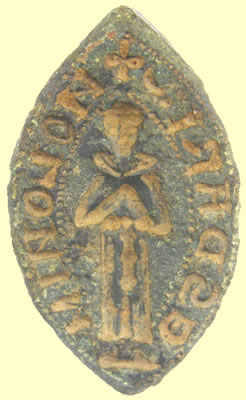

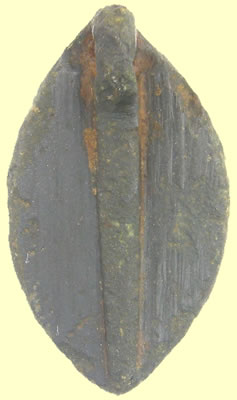









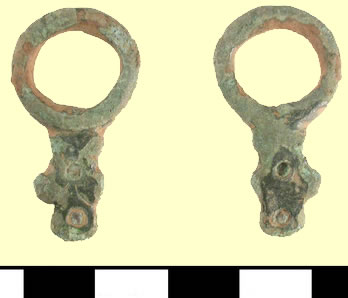



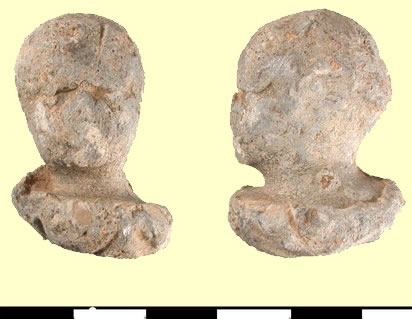
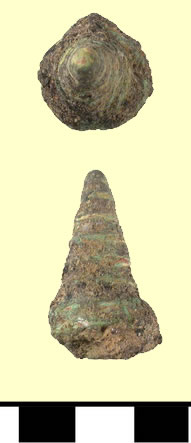

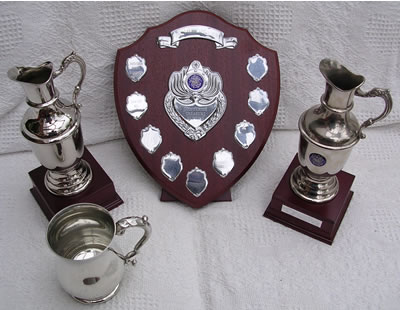
.jpg)
.jpg)
.jpg)
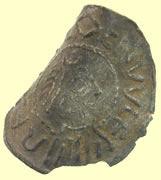
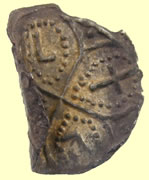

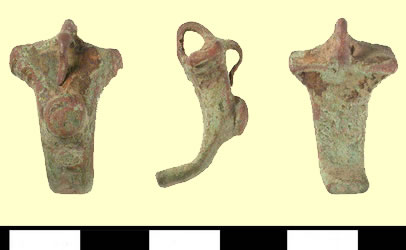

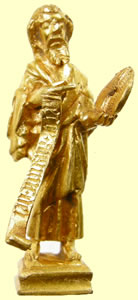
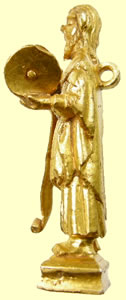
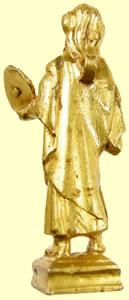

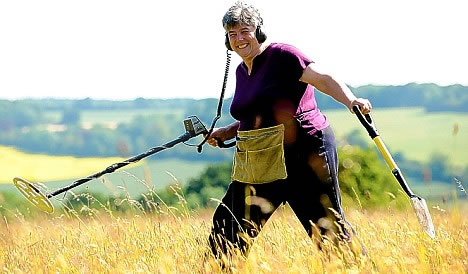





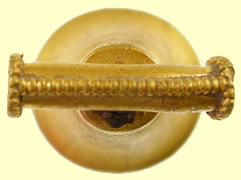
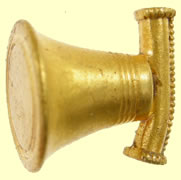
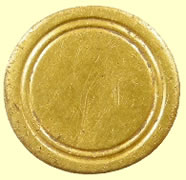
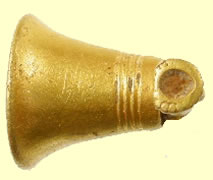






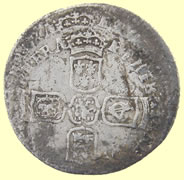
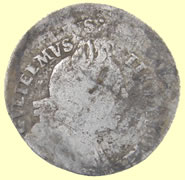


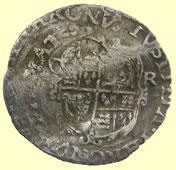
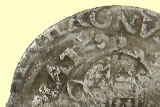
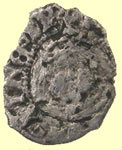
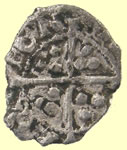
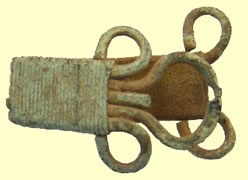
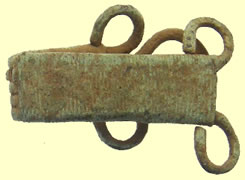
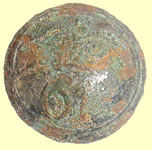

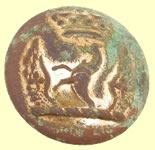

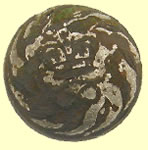
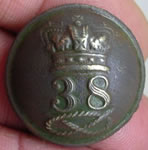
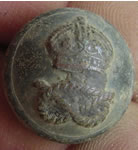
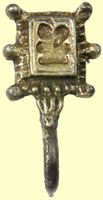

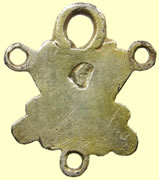
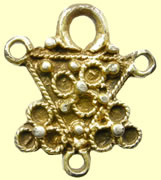
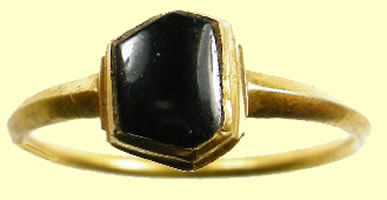
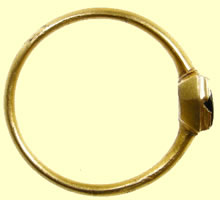
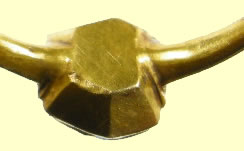











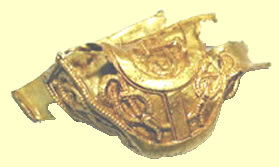







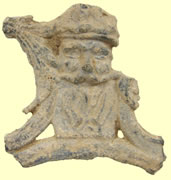
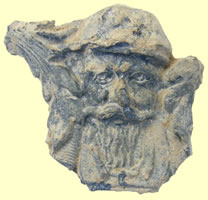
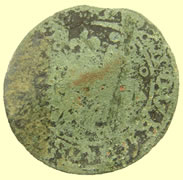


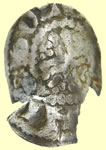
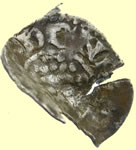
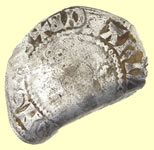
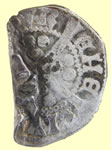
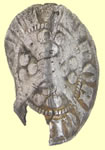

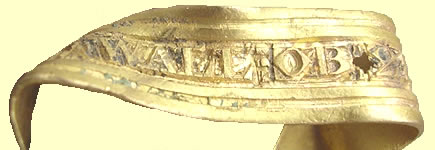
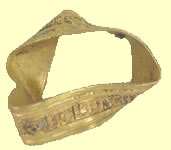

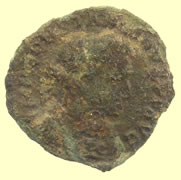





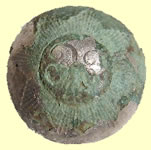


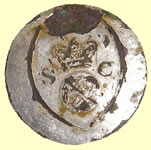
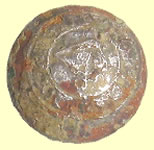

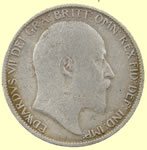


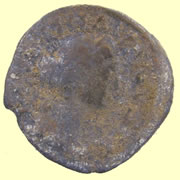
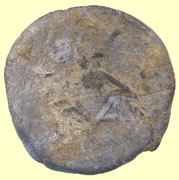
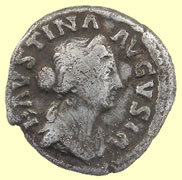
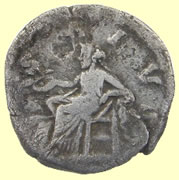
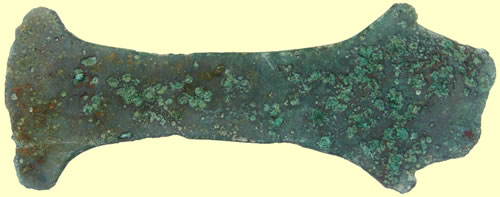


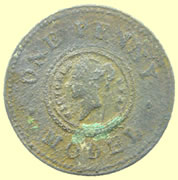
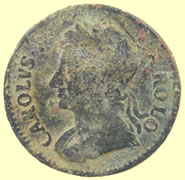

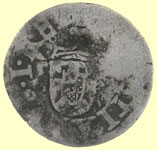
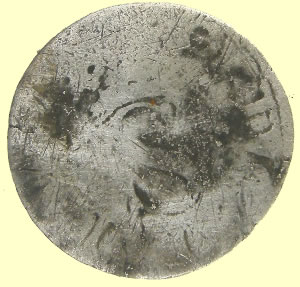

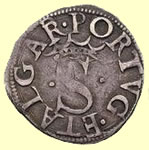



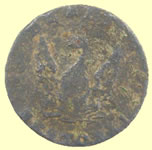

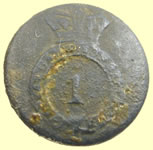
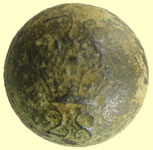
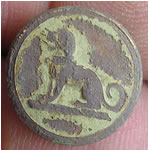
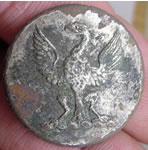

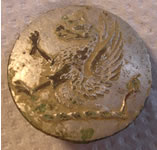
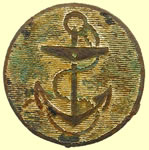

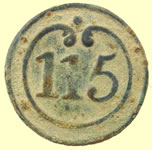
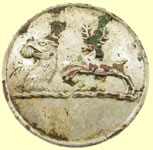
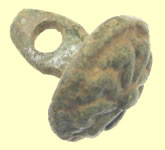



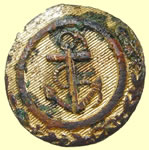

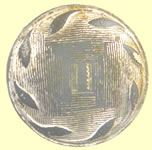
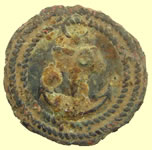






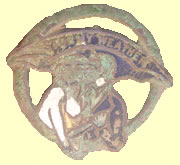
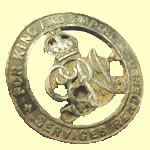
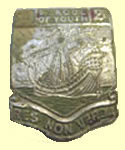
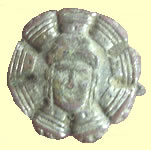
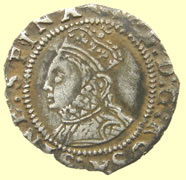
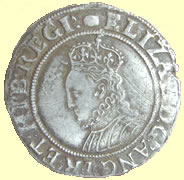



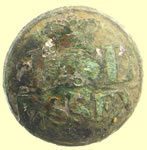
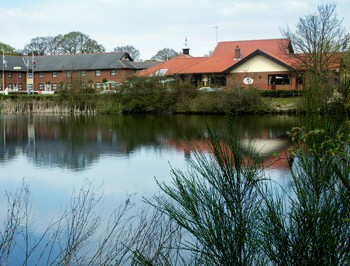
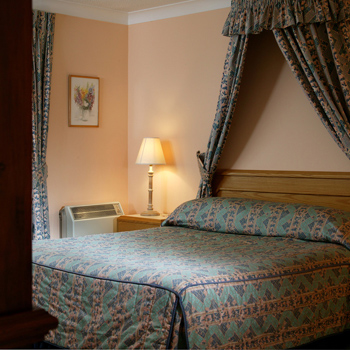



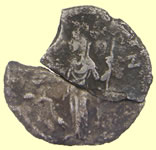

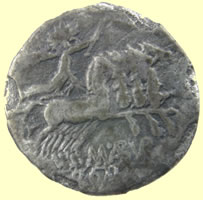
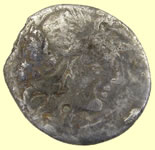
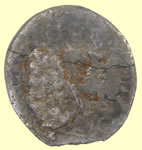









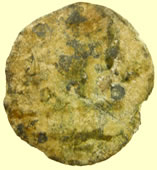
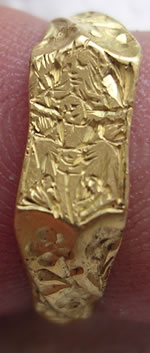
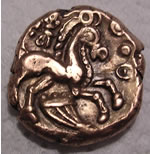
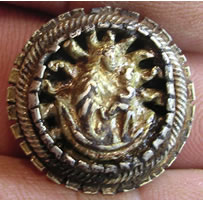
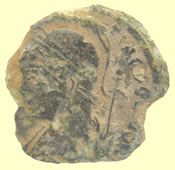
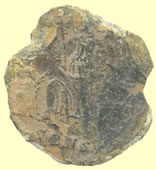




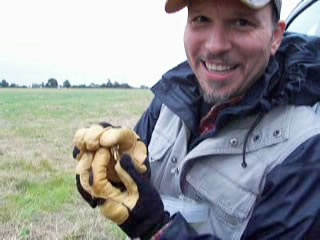
.jpg)
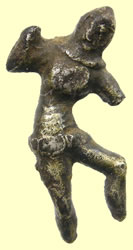
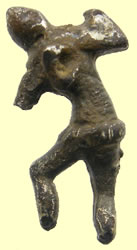




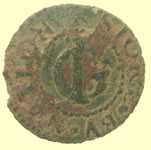
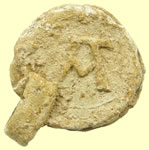
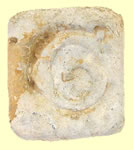
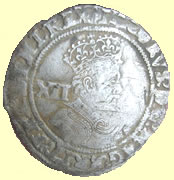
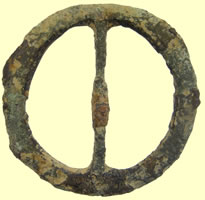
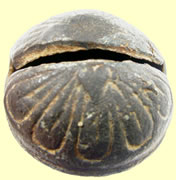

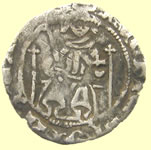
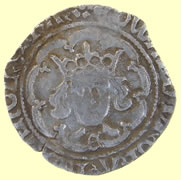



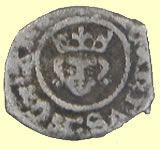


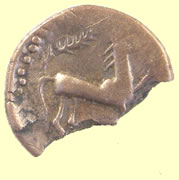
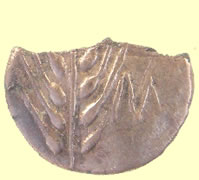

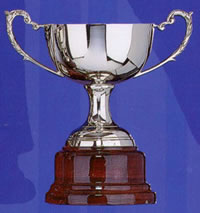

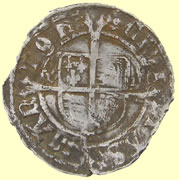
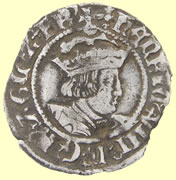
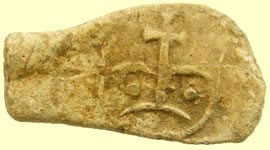
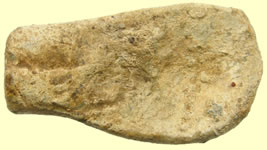

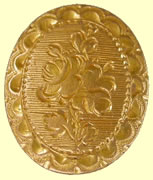
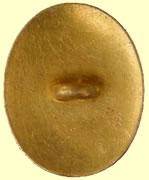

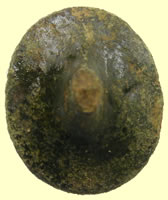
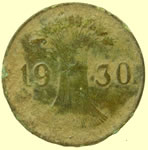
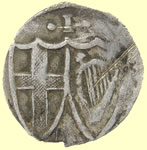
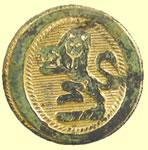

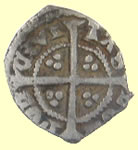

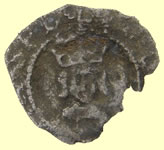
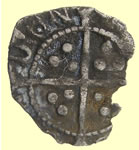
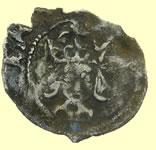
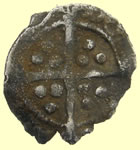
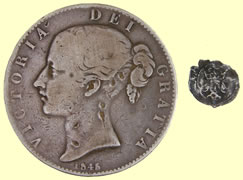


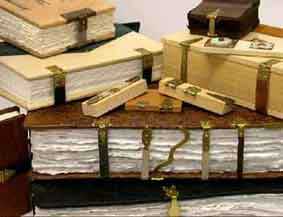


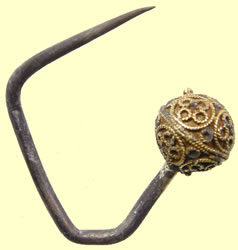
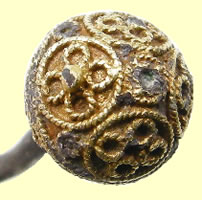






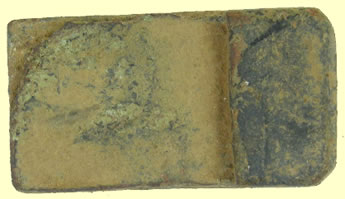


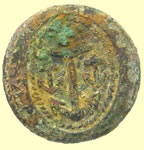


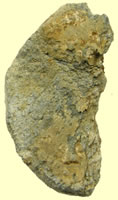
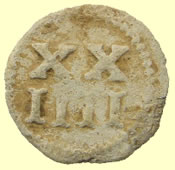
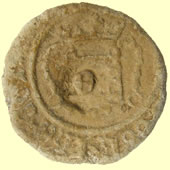
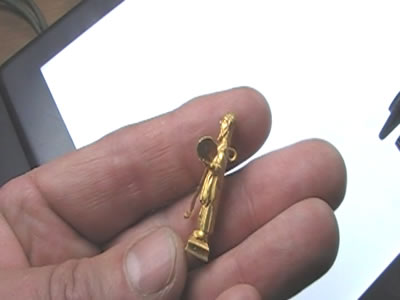
 This is a weird weeks hunt, new freshly rolled land gave the guys almost a total skunking again apart from a nice German milled silver and then Canadian Bill pops a monster find again with this simply stunning medieval religious seal matrix. It is Jesus Christ's bust with a hallo. The legend is probably latin so the experts at the British museum will be able to decipher it while it is being recorded.
This is a weird weeks hunt, new freshly rolled land gave the guys almost a total skunking again apart from a nice German milled silver and then Canadian Bill pops a monster find again with this simply stunning medieval religious seal matrix. It is Jesus Christ's bust with a hallo. The legend is probably latin so the experts at the British museum will be able to decipher it while it is being recorded.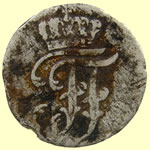
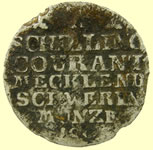

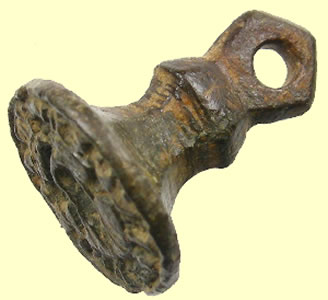
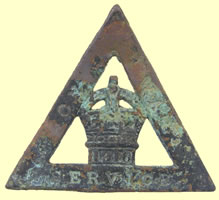


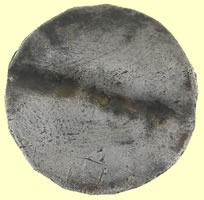






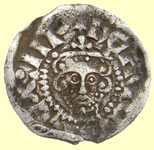
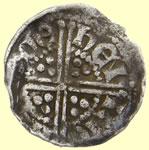
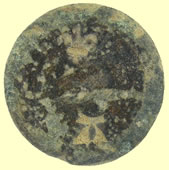
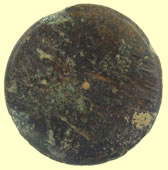
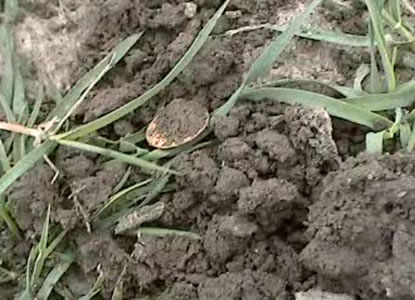
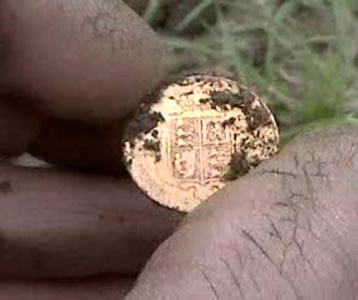





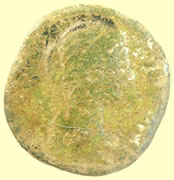
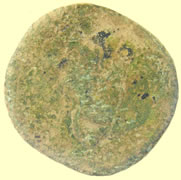
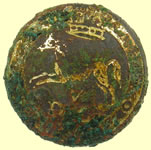
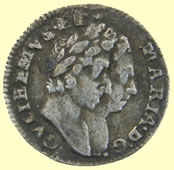

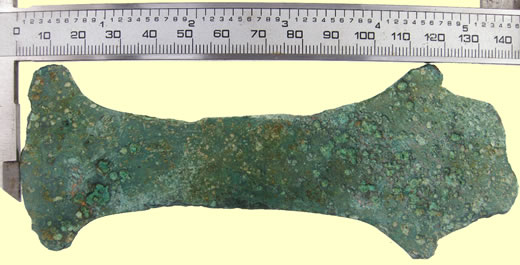



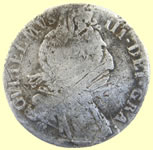
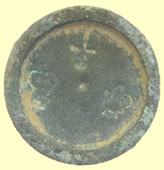
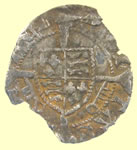
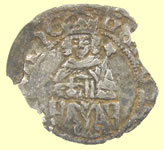
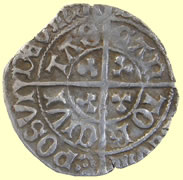
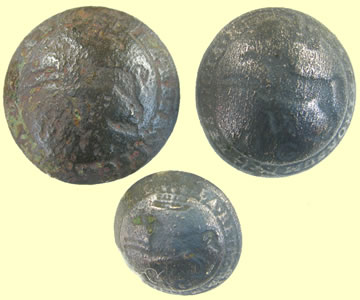
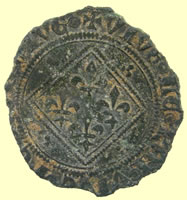

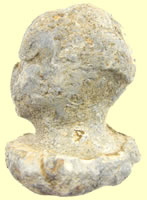
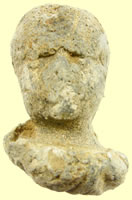
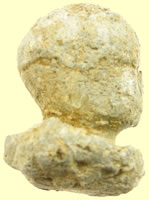
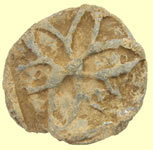
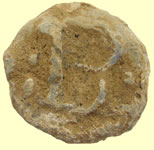
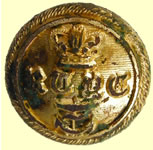
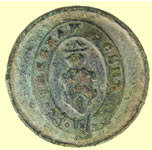
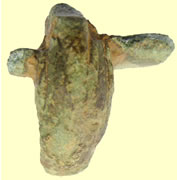
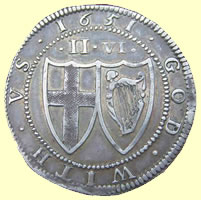


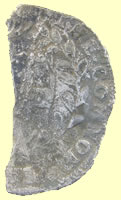
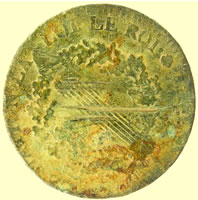
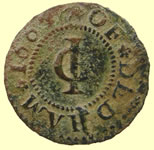


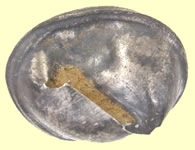
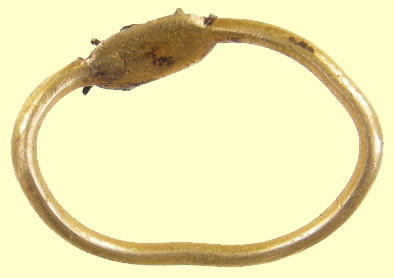


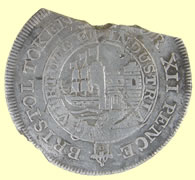
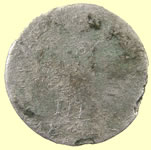
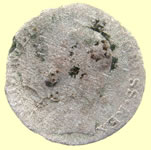
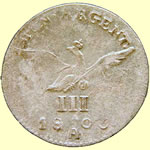
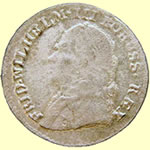
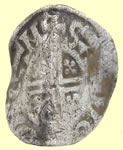
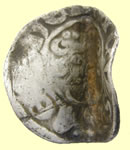
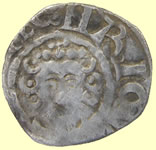
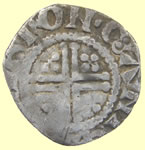

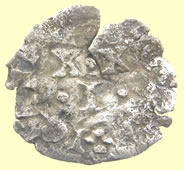
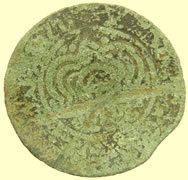
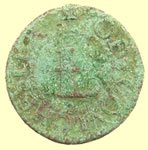
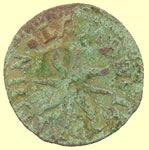



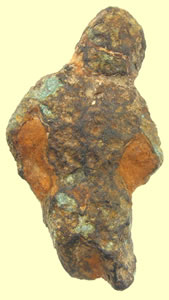
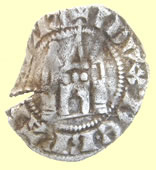
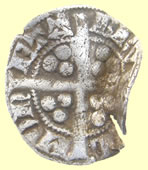


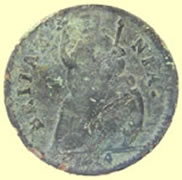
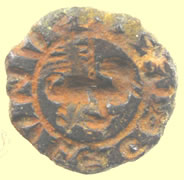
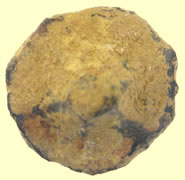
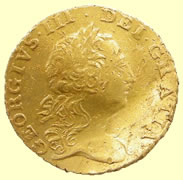
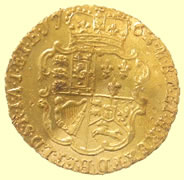





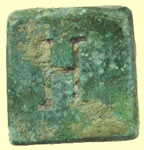
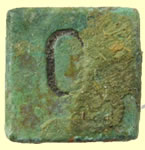
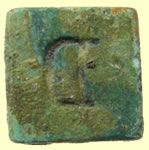

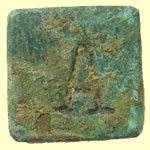
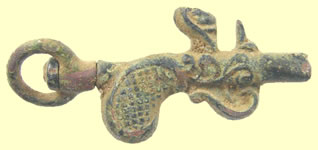
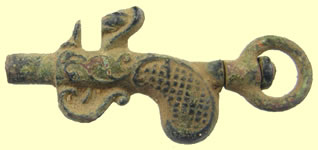

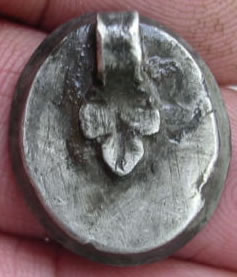
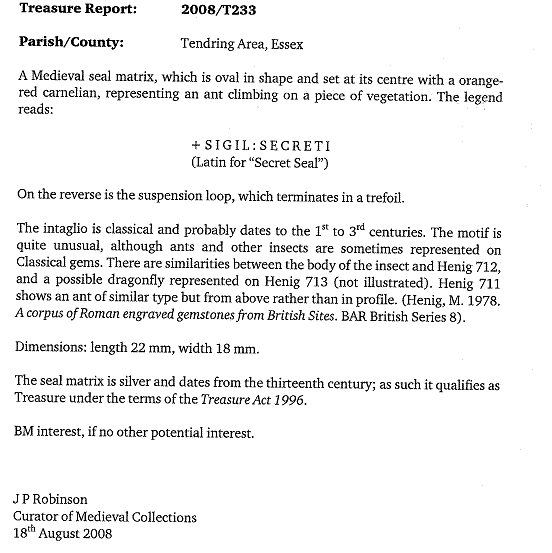

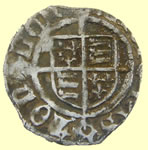
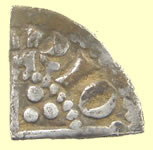
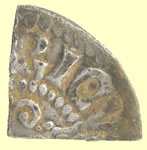
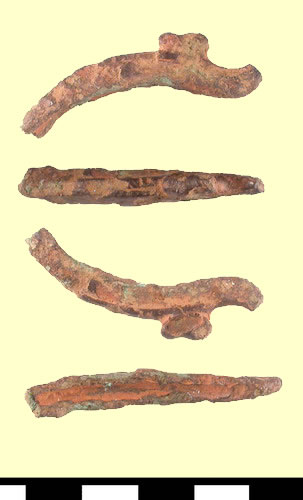


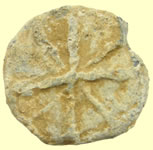






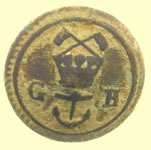

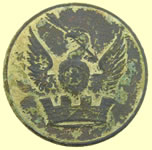
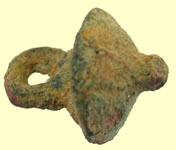
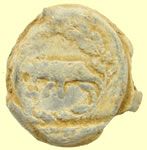

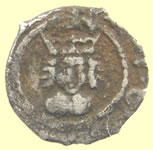
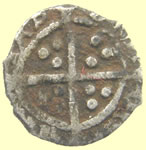
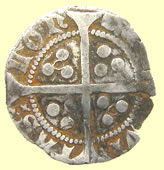

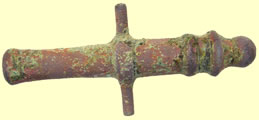

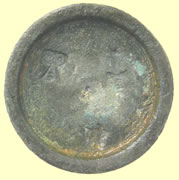
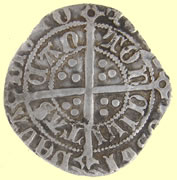
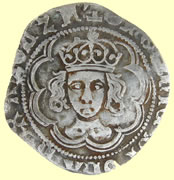
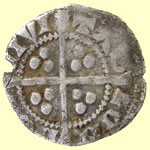
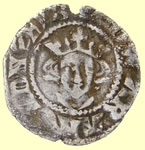

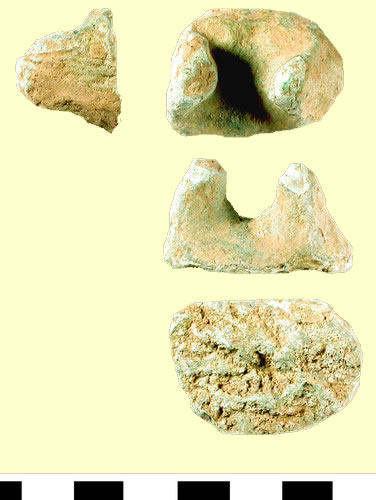
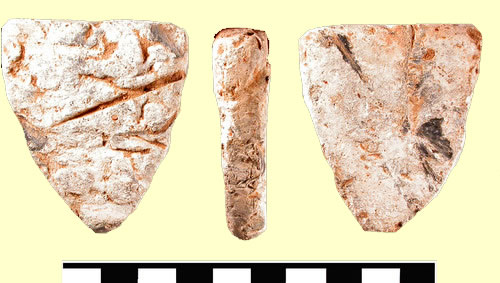




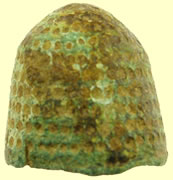
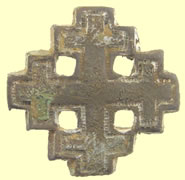
 'A badge for a Knight of the Order of the Holy Sepulchre in bronze and dating somewhere around C13/14th possibly very slightly later . This is a very scarce item and it relates to The Equestrian Order of the Holy Sepulchre of Jerusalem being a Catholic chivalric order of Knighthood that traces its roots to Godfrey of Bouillon, principal leader of the First Crusade. According to reliable sources in the Vatican and Jerusalem, it began in historical reality as a mixed clerical and lay confraternity (association) of pilgrims which gradually grew around the most central of the Christian holy places in the Middle East, the Holy Sepulchre or the tomb of Jesus Christ.This would have been a pin for a member of the order , there is a mark on the reverse where the original pin would have been fixed
'A badge for a Knight of the Order of the Holy Sepulchre in bronze and dating somewhere around C13/14th possibly very slightly later . This is a very scarce item and it relates to The Equestrian Order of the Holy Sepulchre of Jerusalem being a Catholic chivalric order of Knighthood that traces its roots to Godfrey of Bouillon, principal leader of the First Crusade. According to reliable sources in the Vatican and Jerusalem, it began in historical reality as a mixed clerical and lay confraternity (association) of pilgrims which gradually grew around the most central of the Christian holy places in the Middle East, the Holy Sepulchre or the tomb of Jesus Christ.This would have been a pin for a member of the order , there is a mark on the reverse where the original pin would have been fixed 

